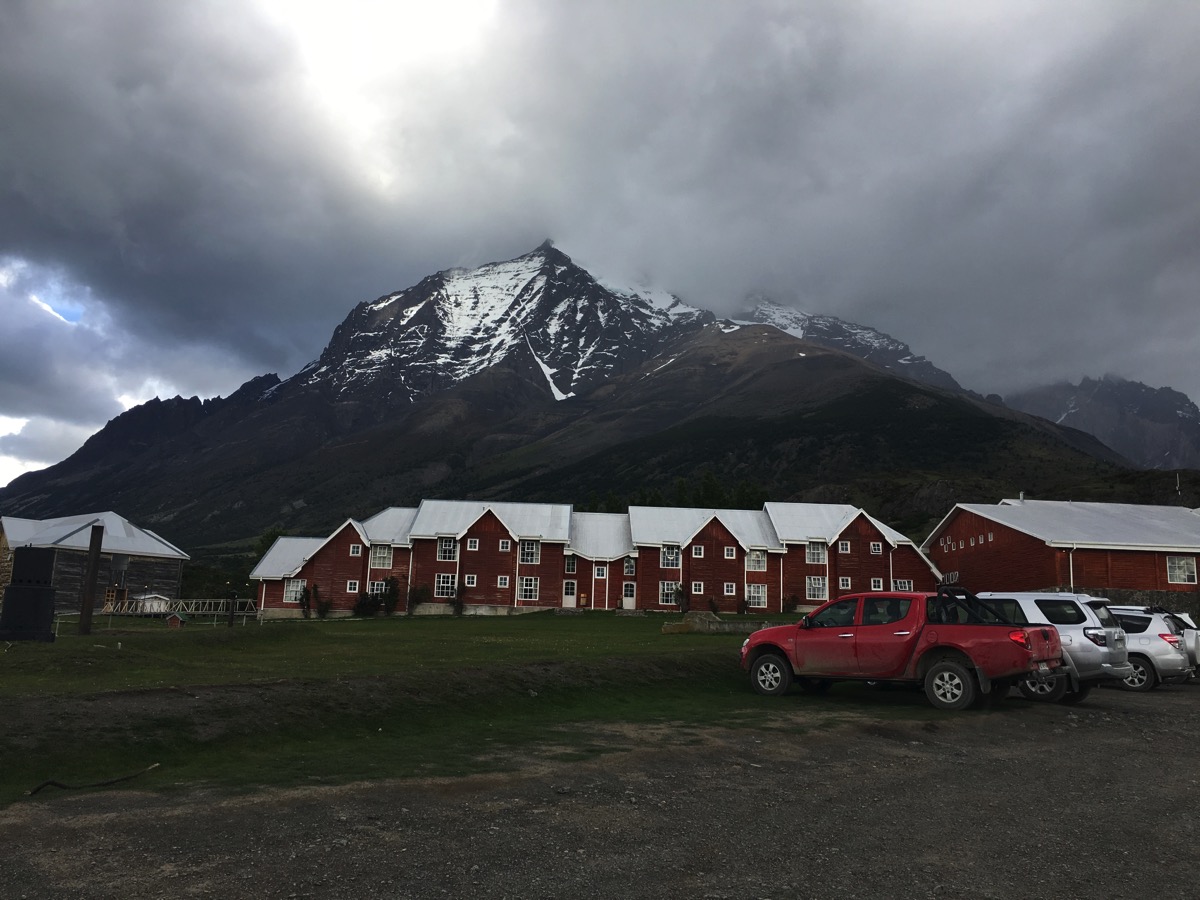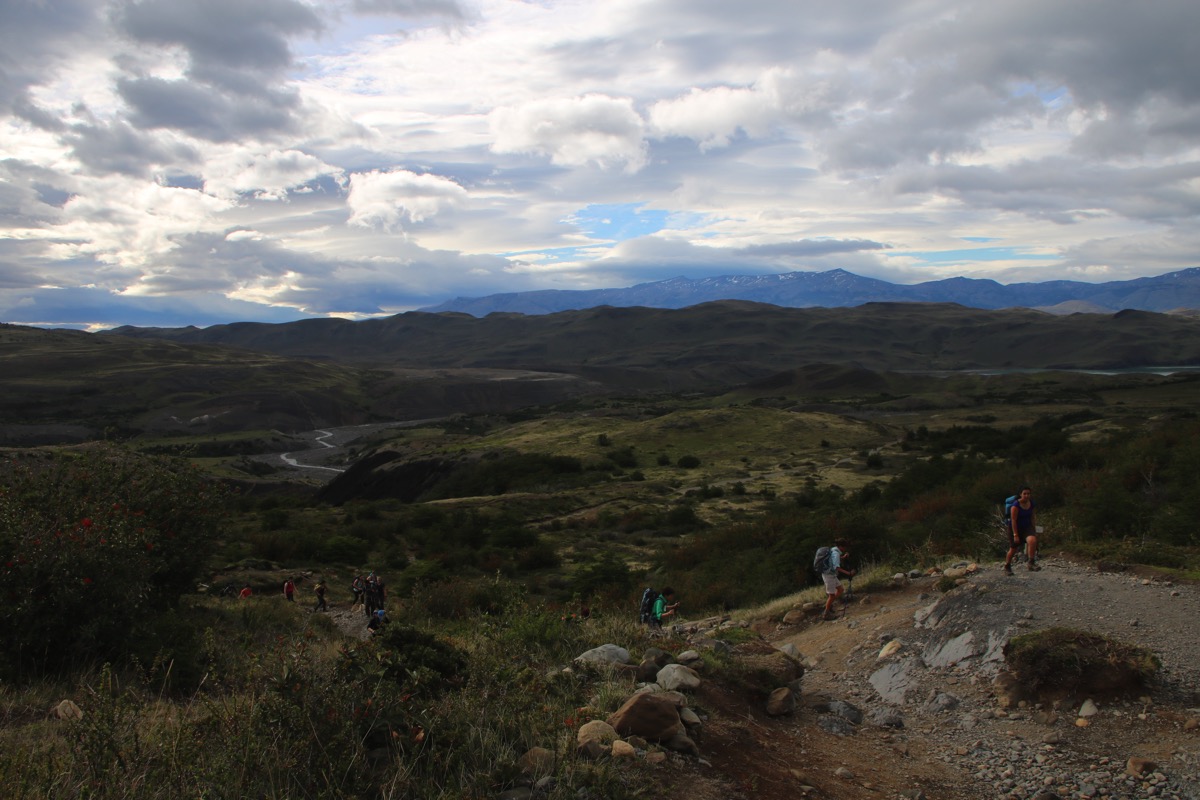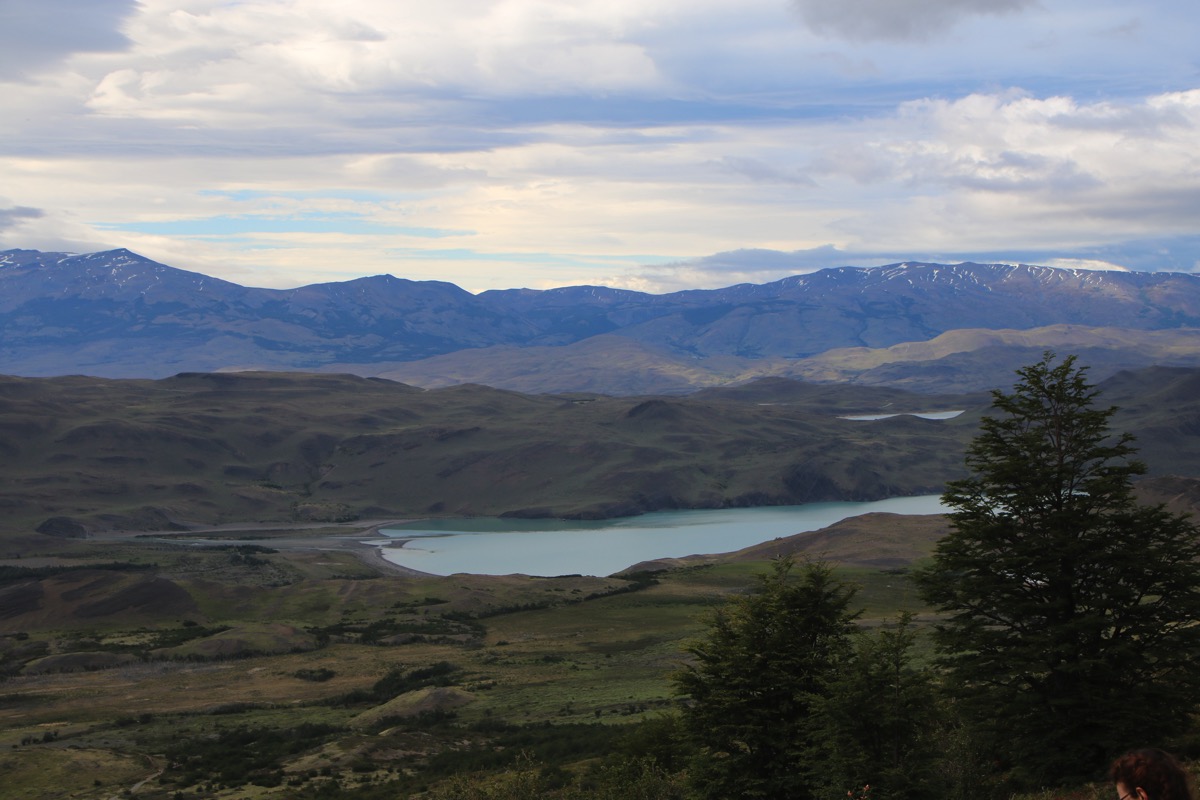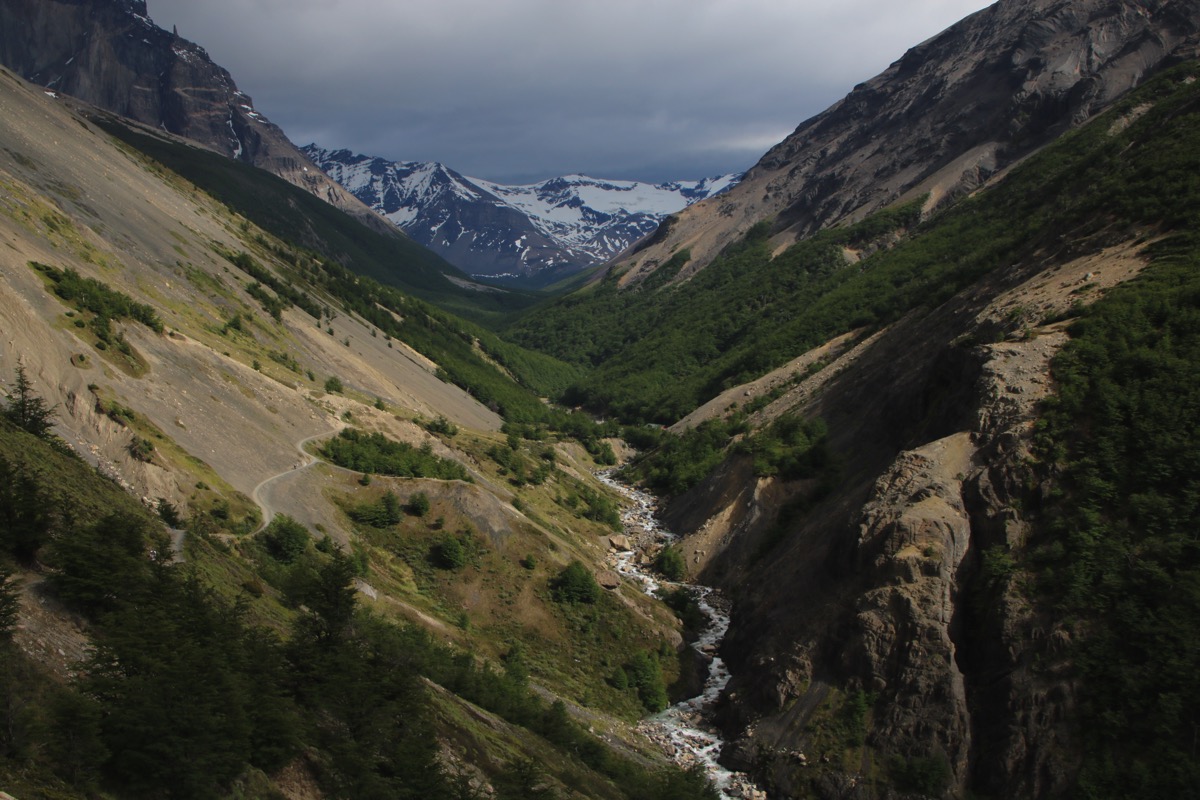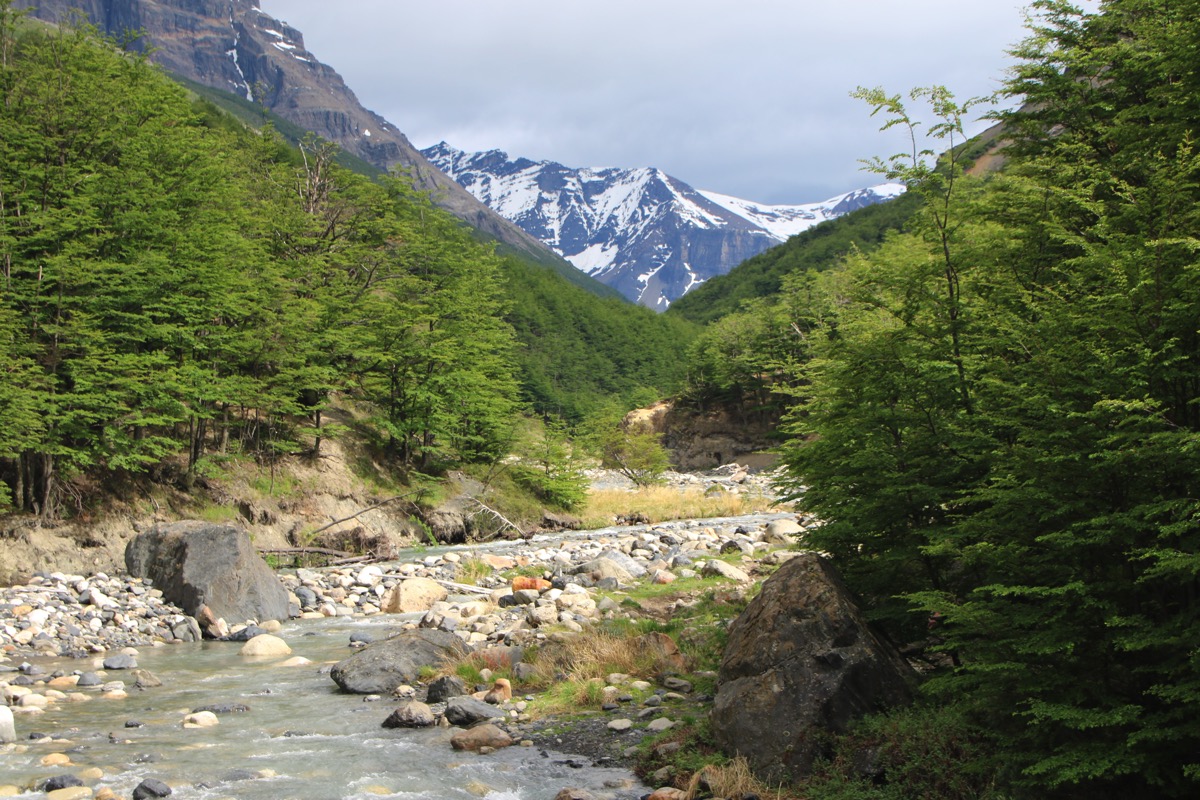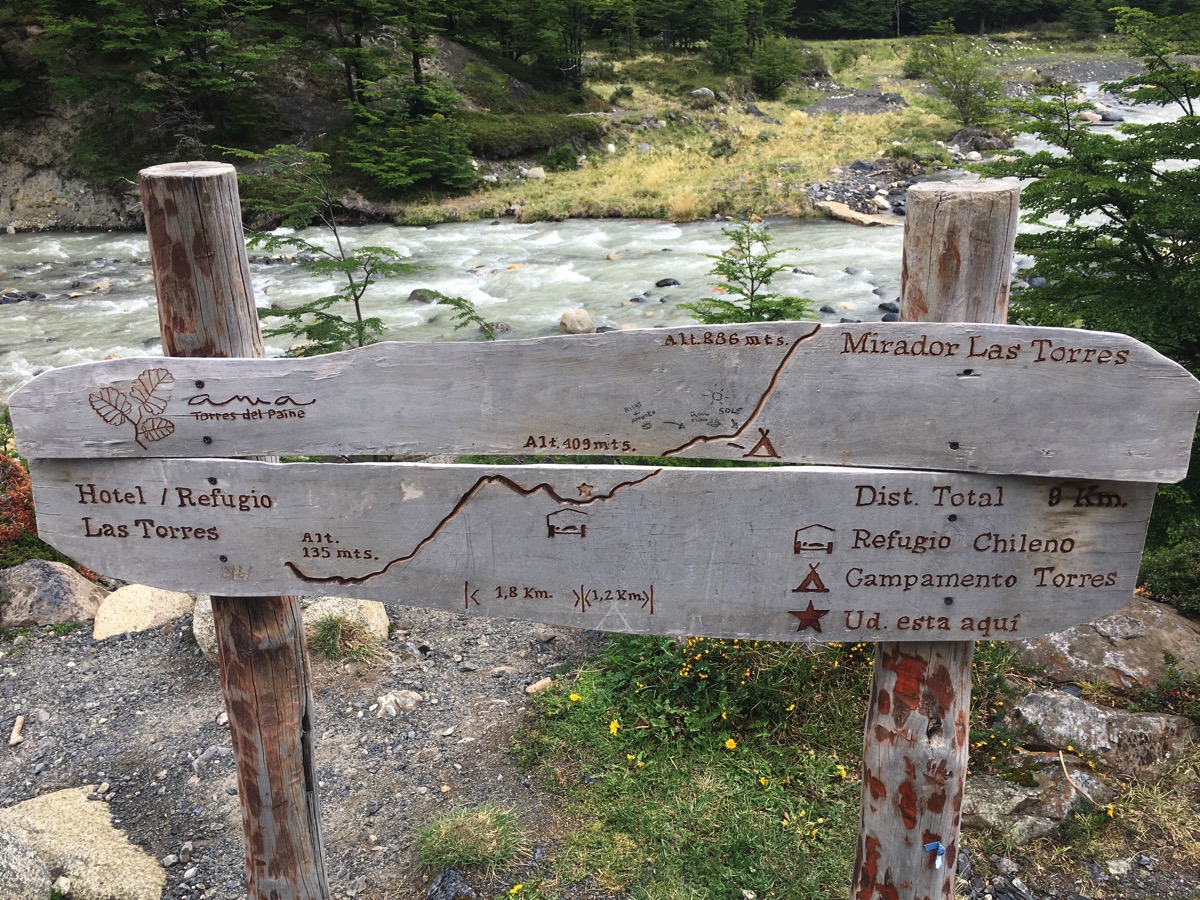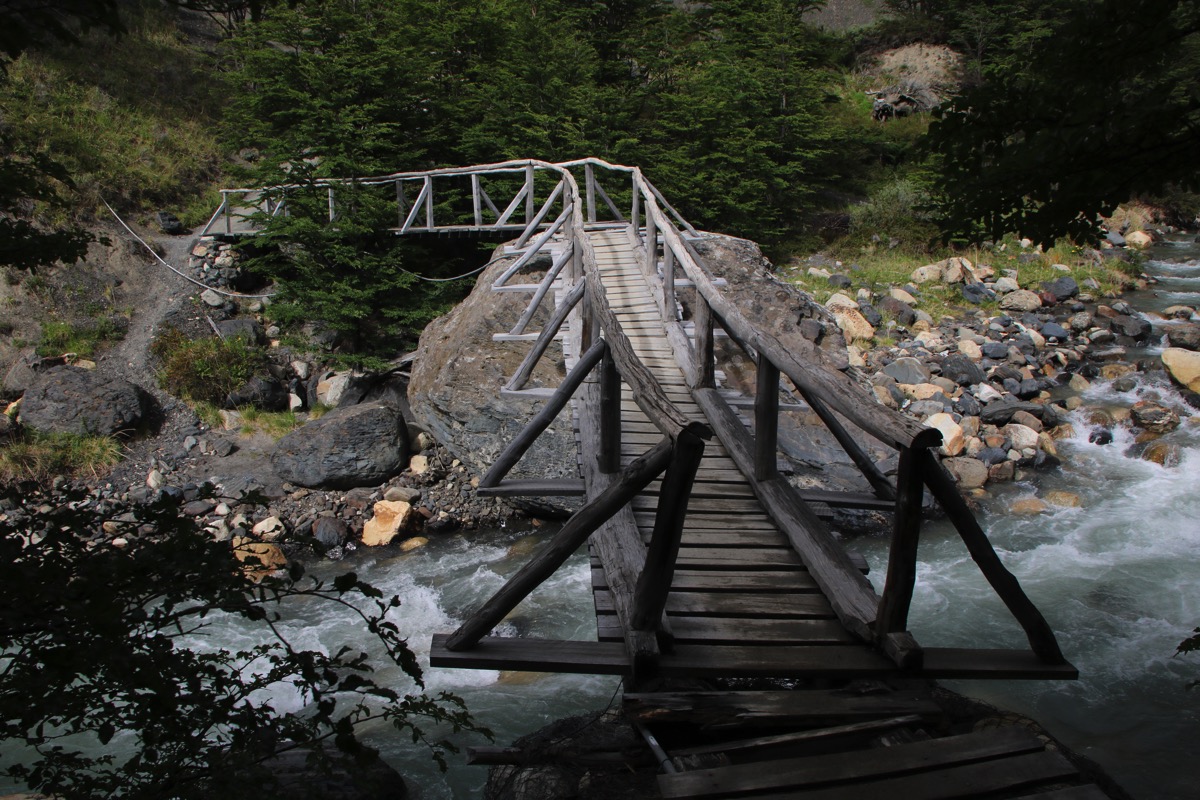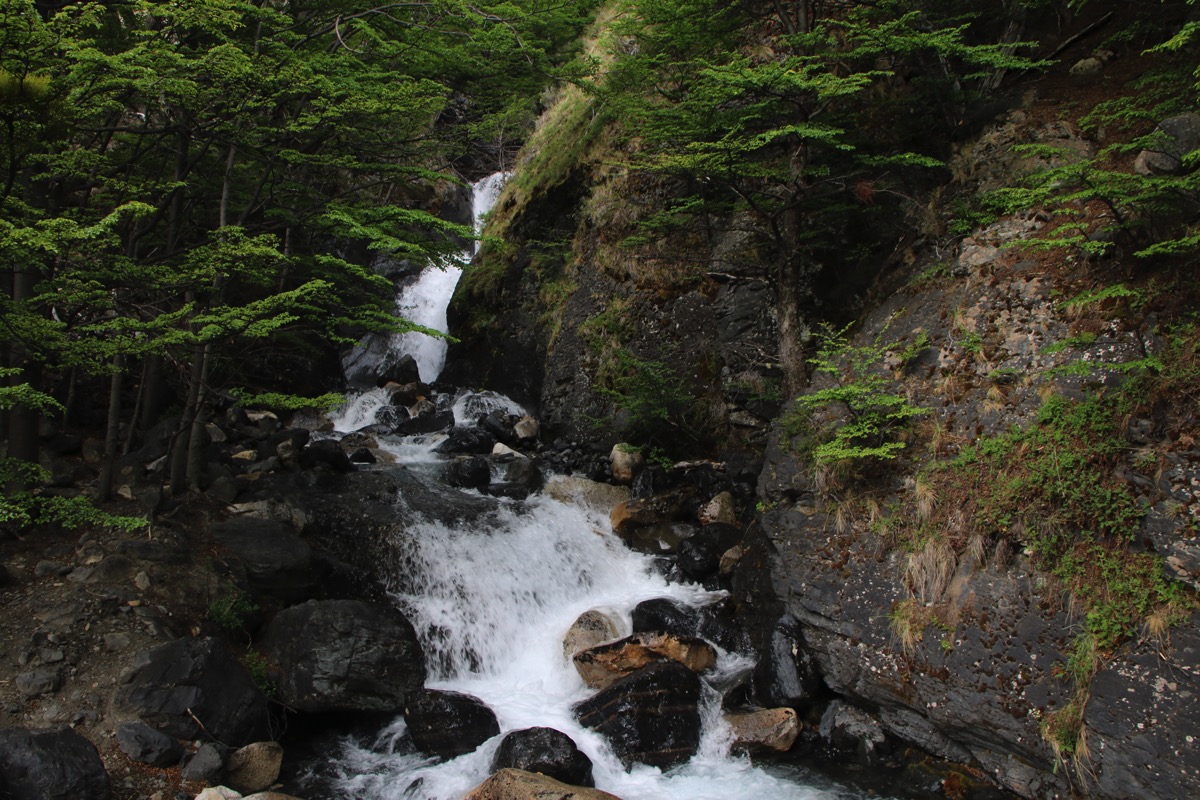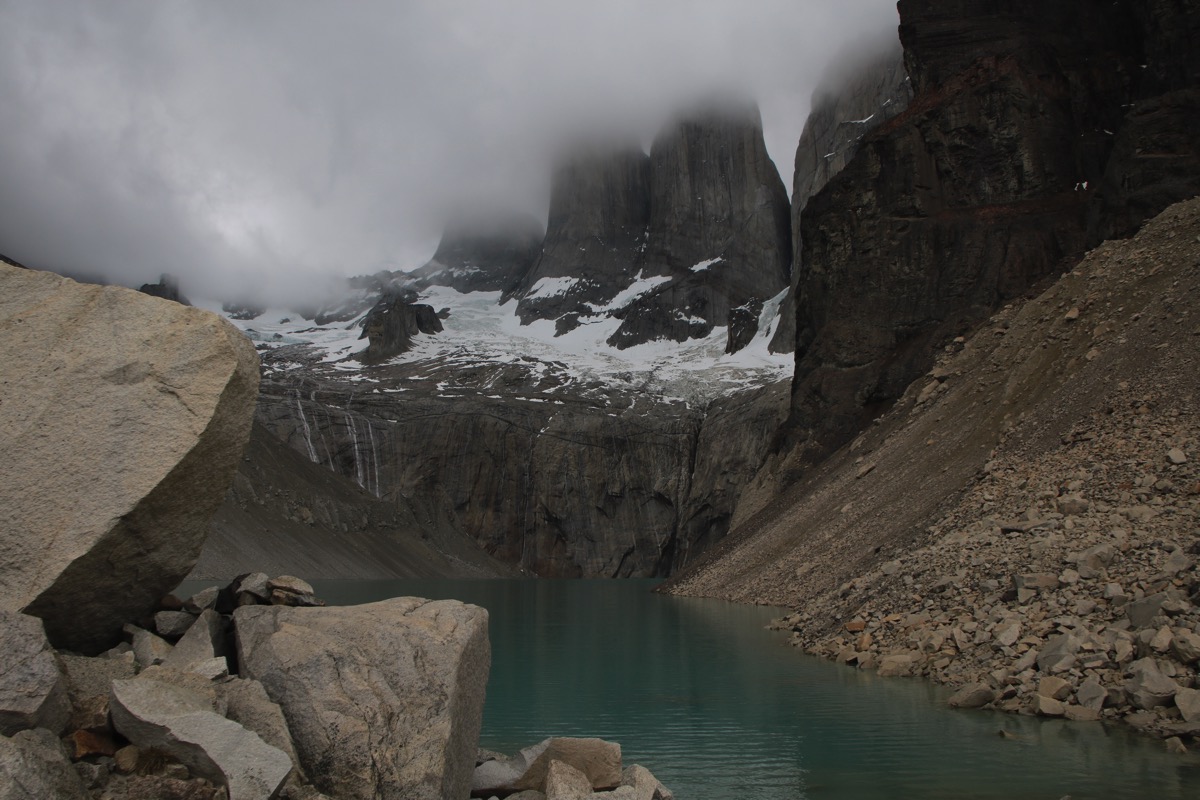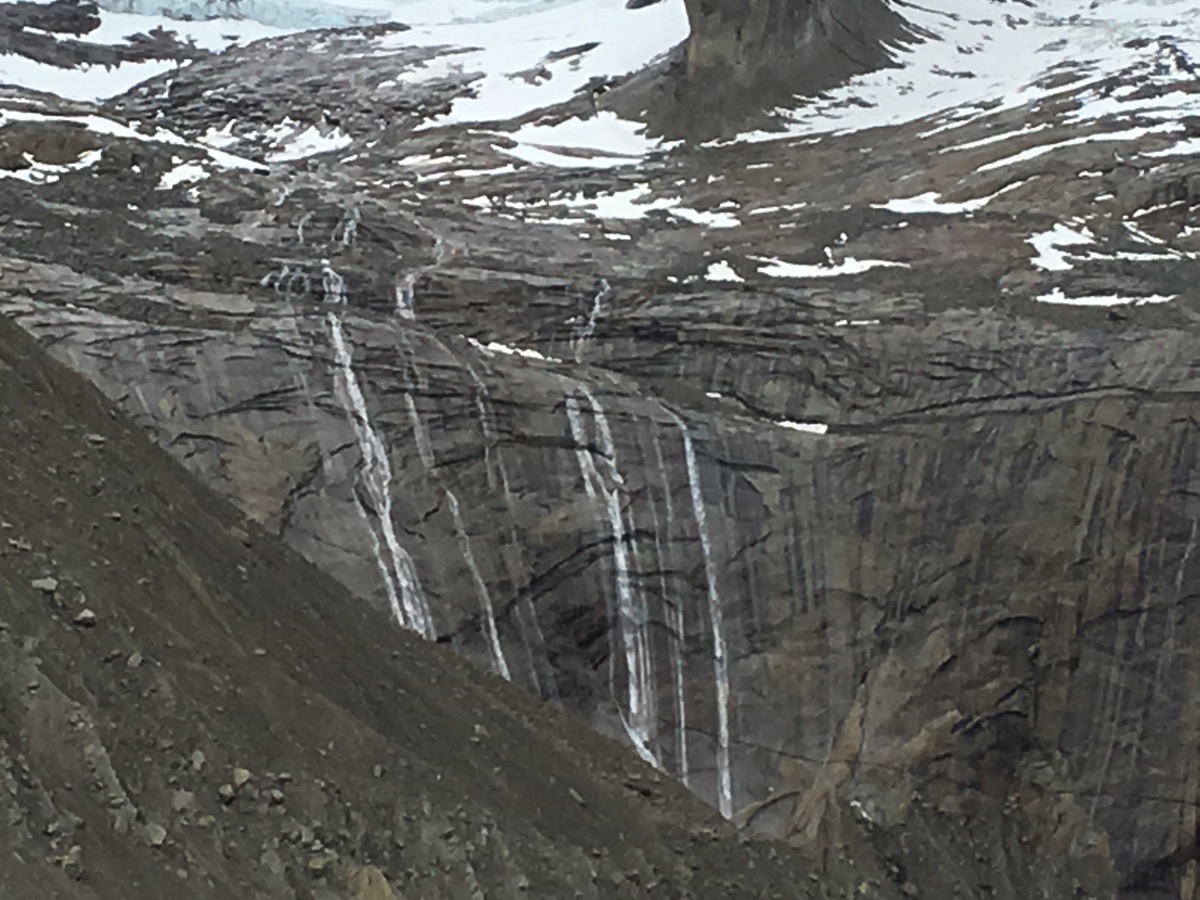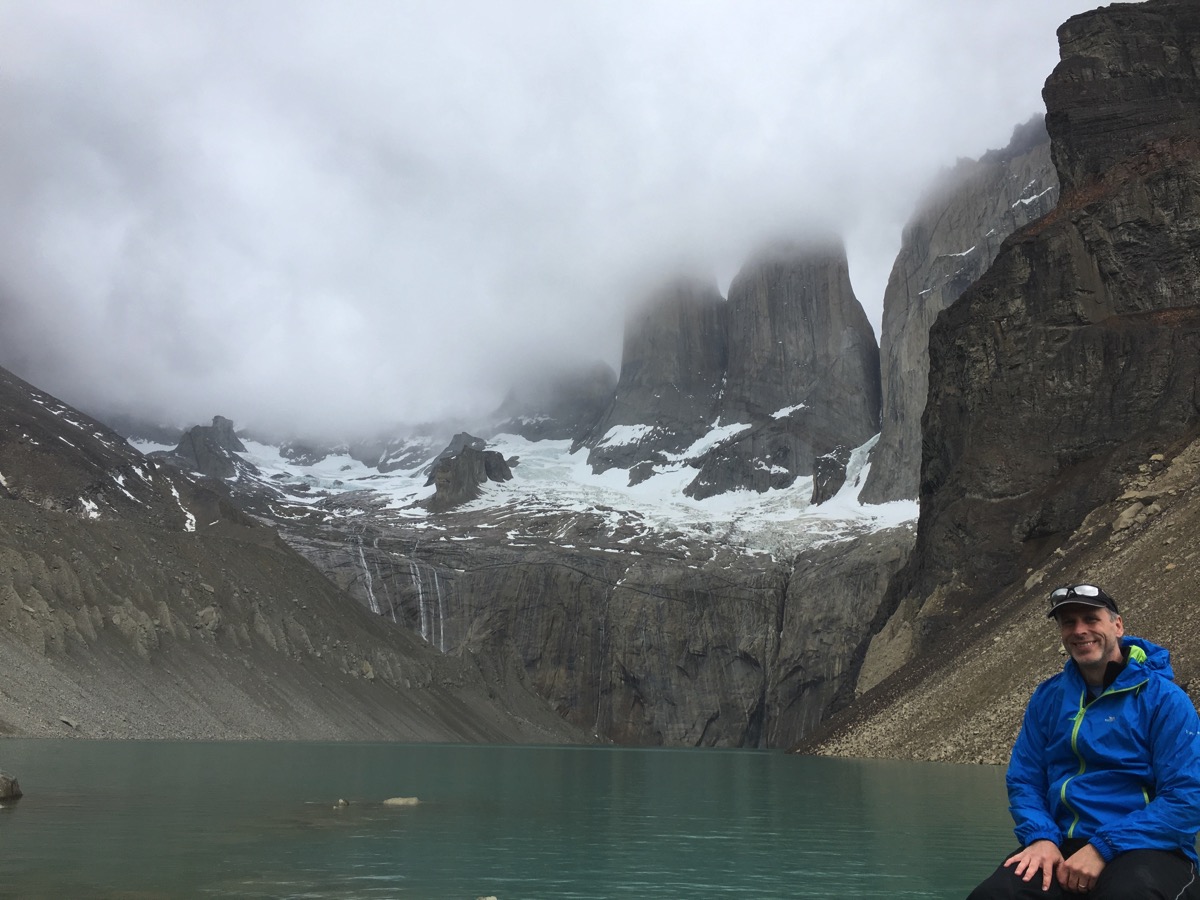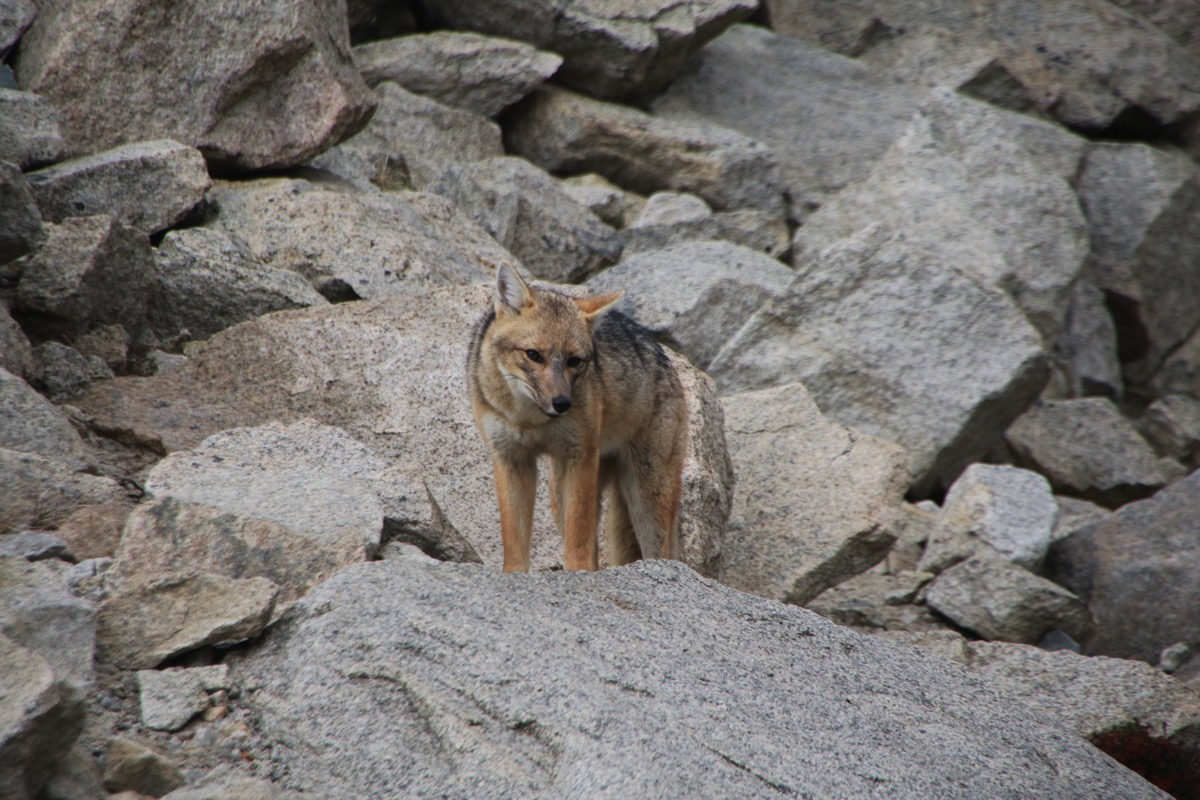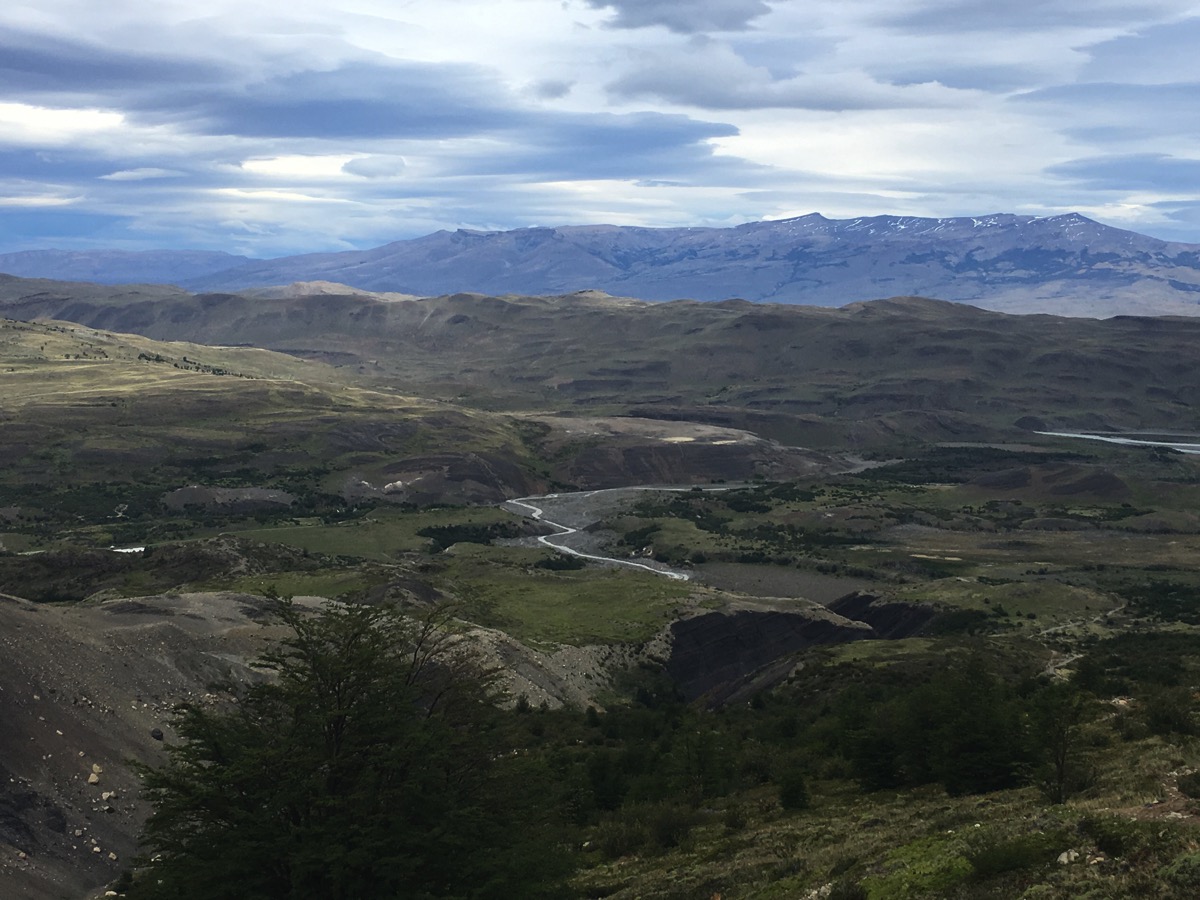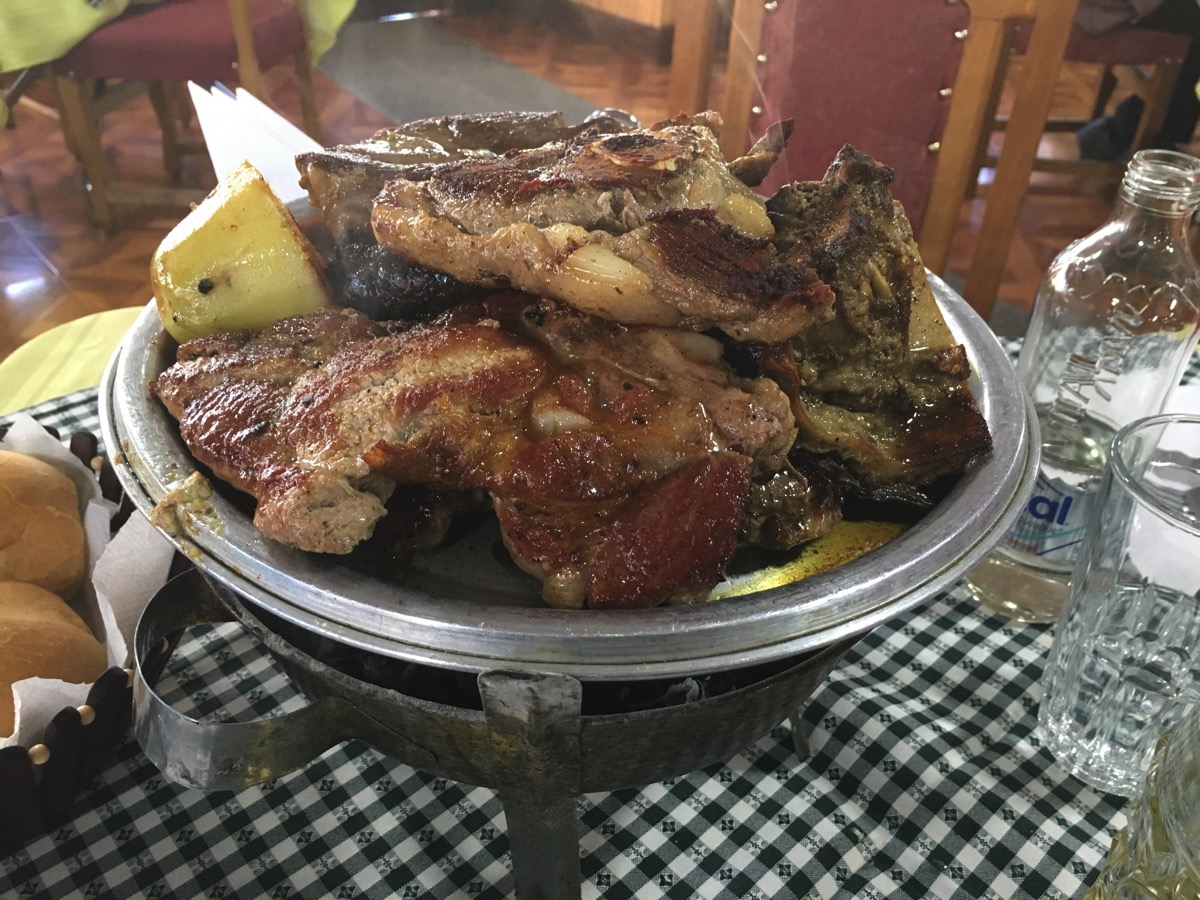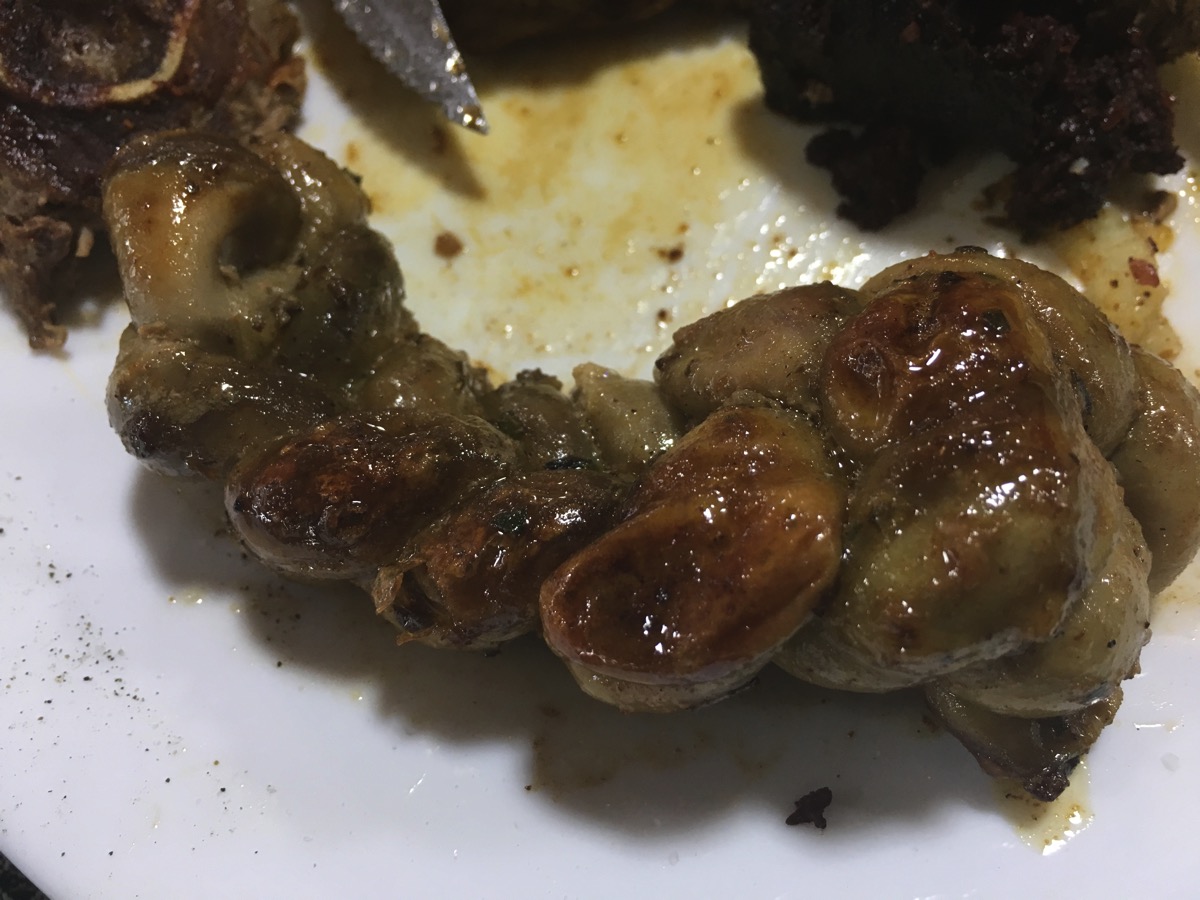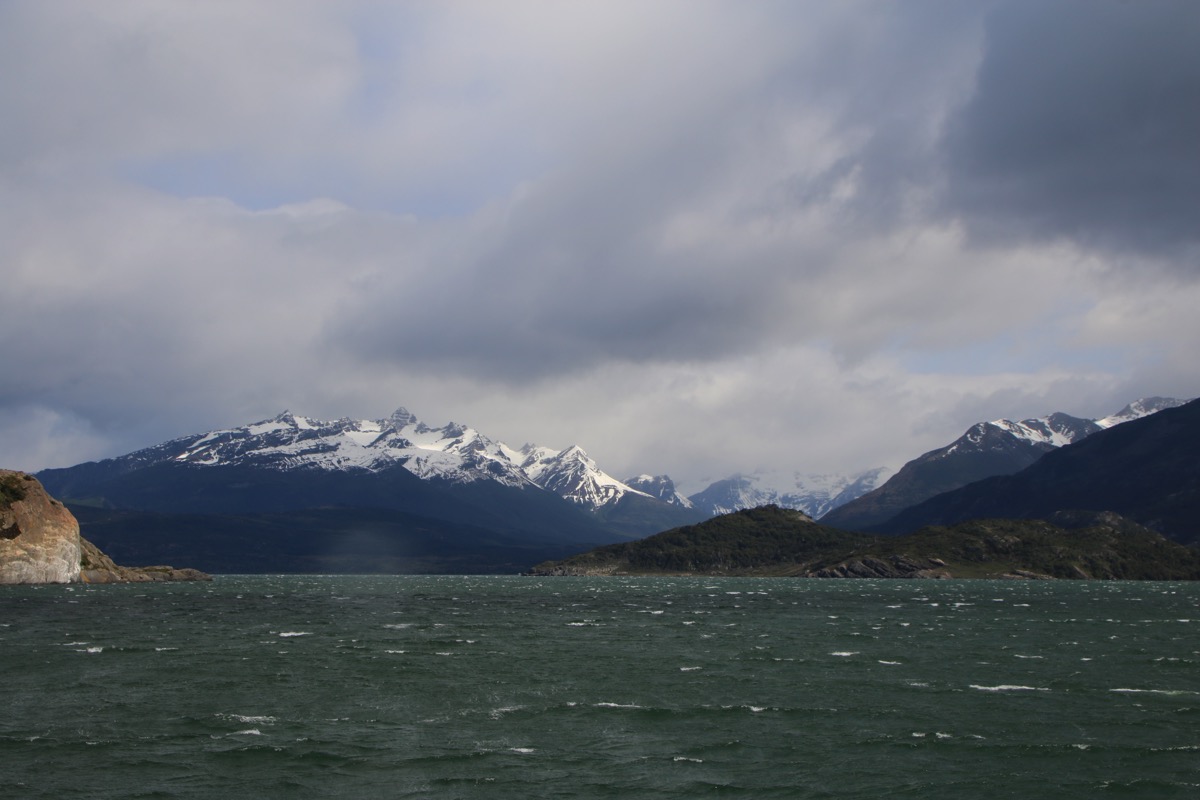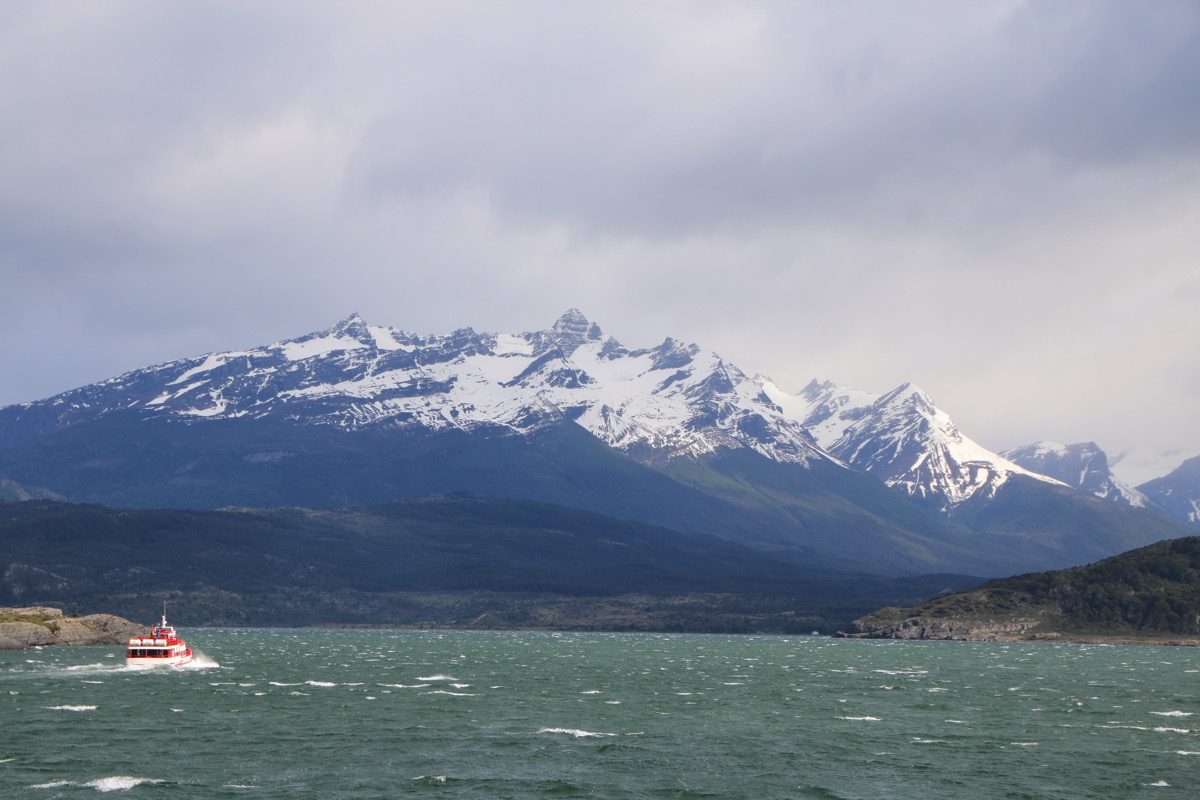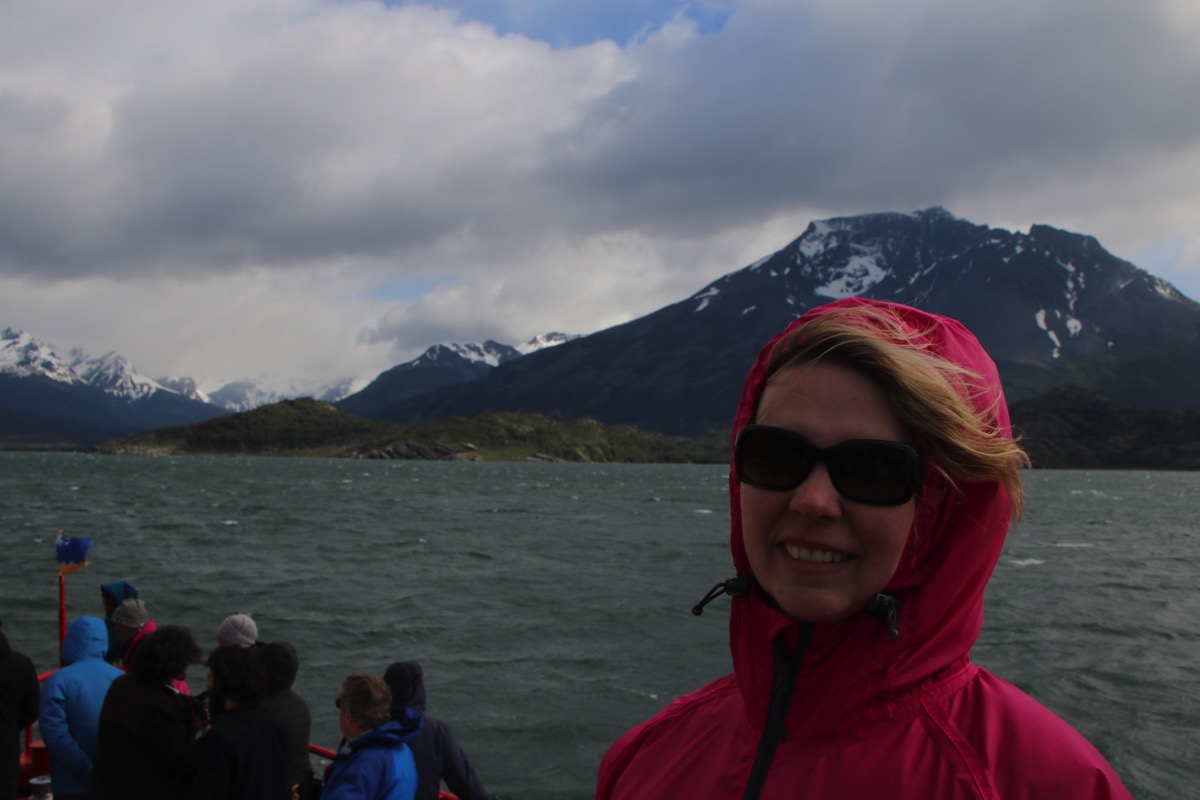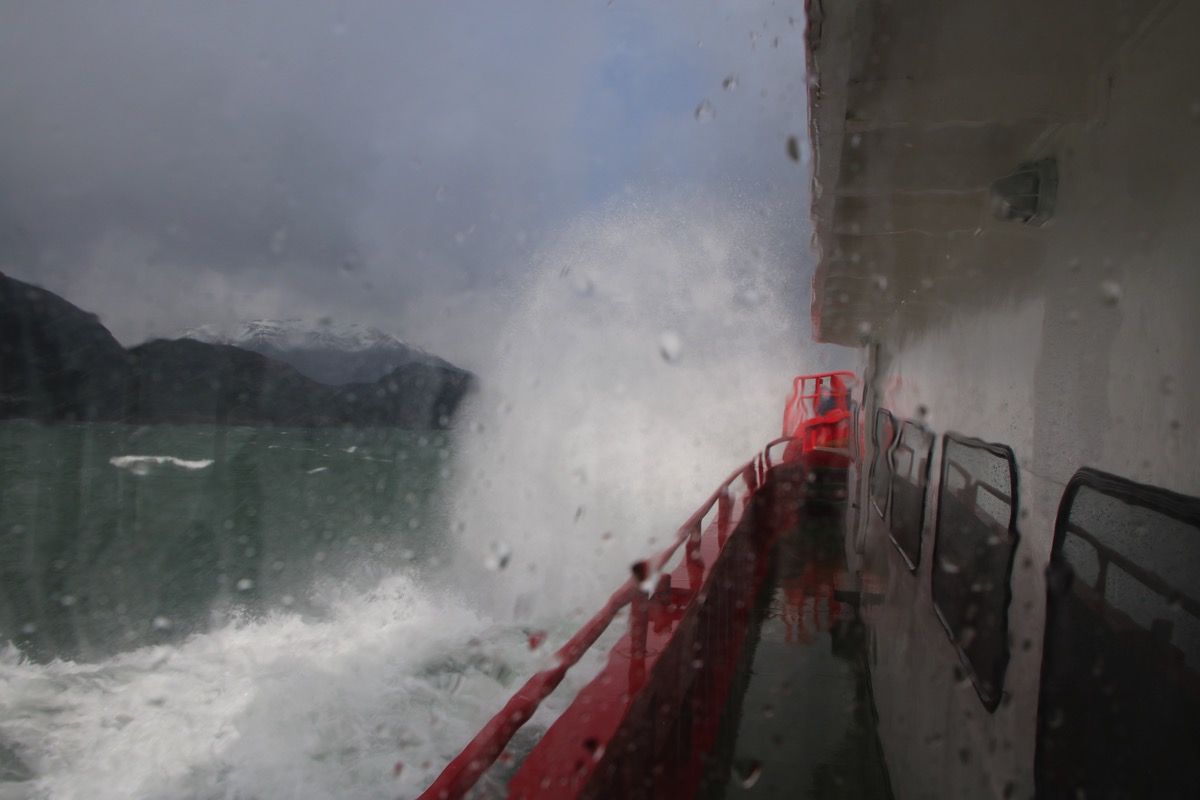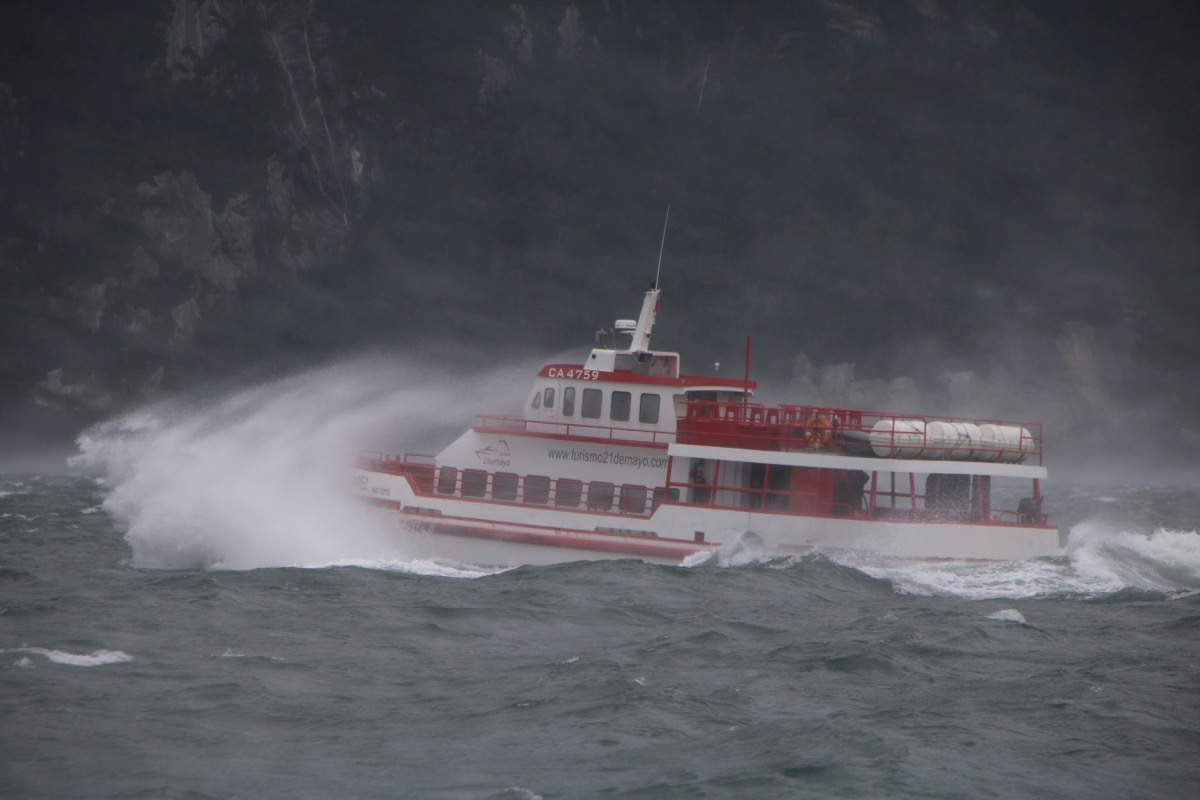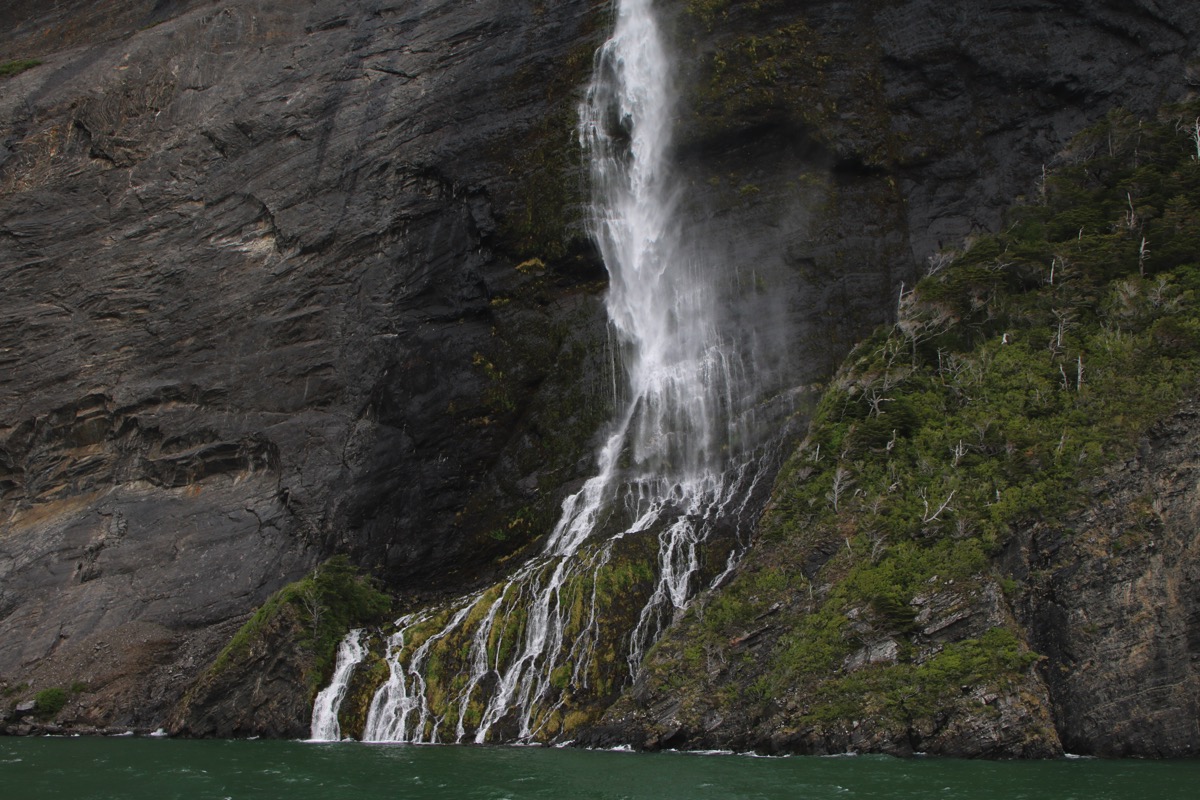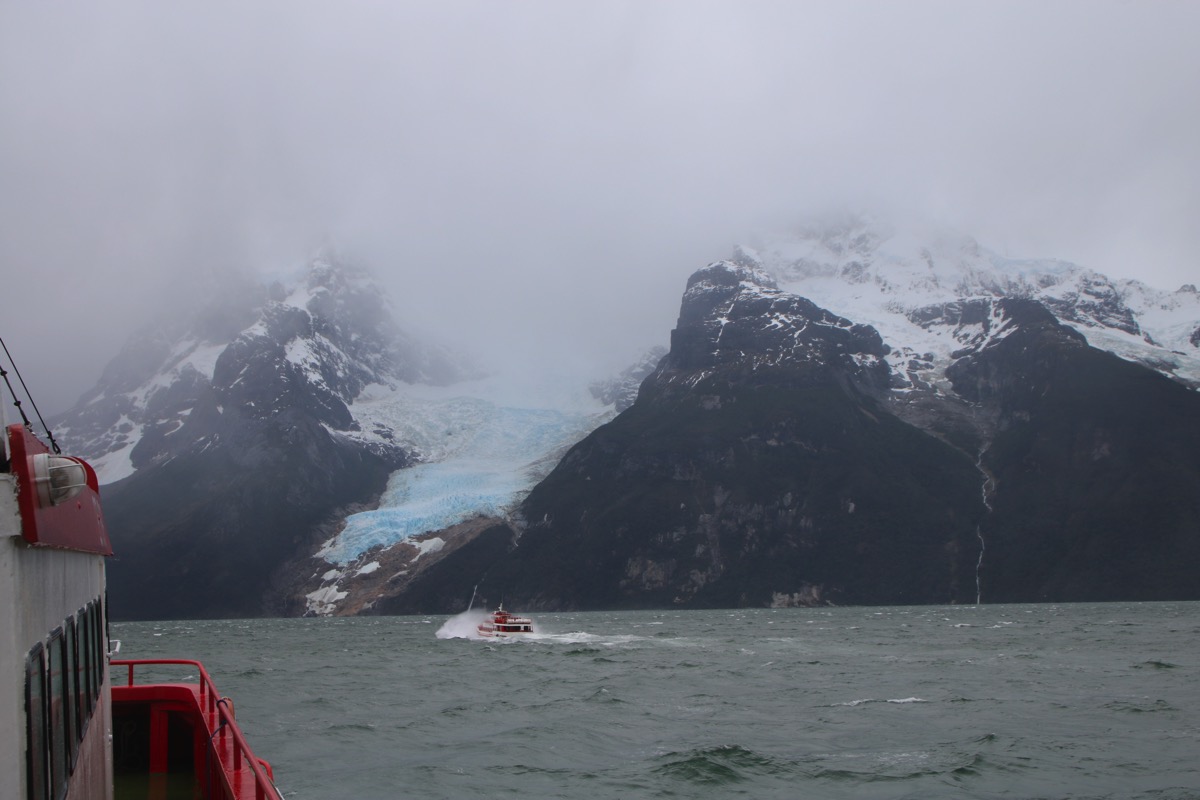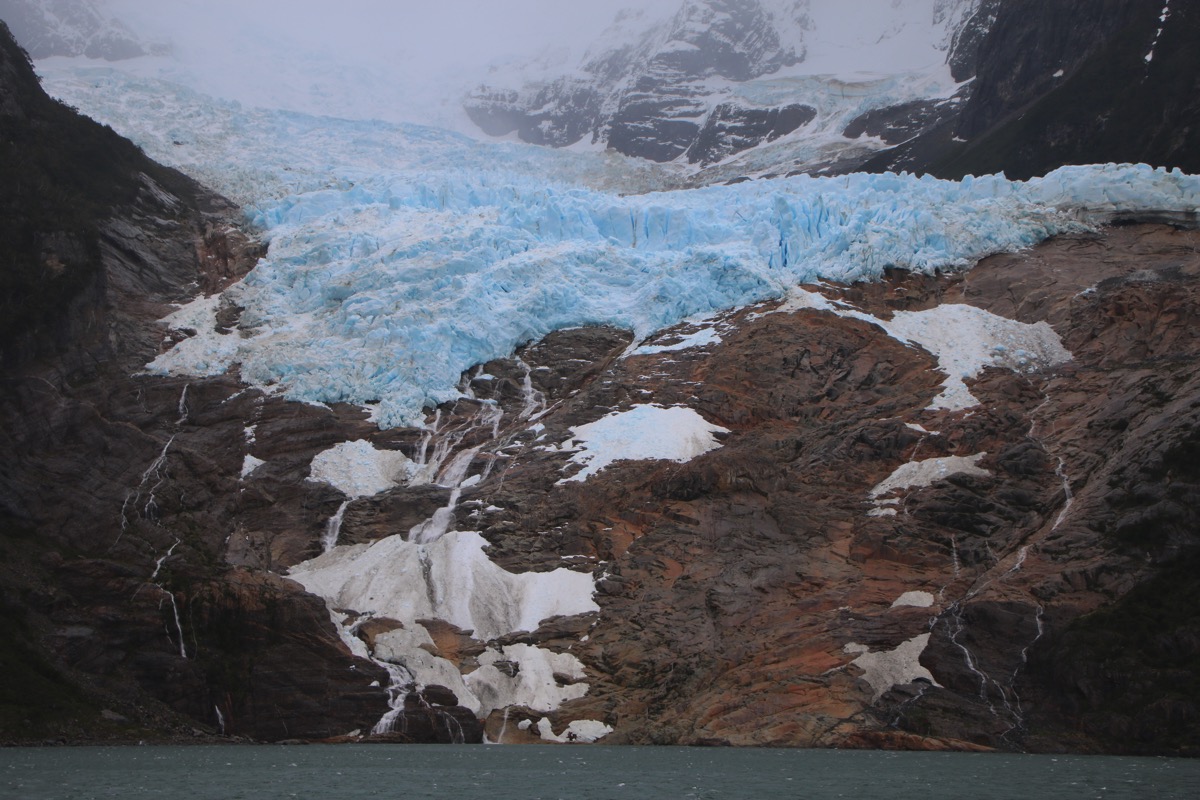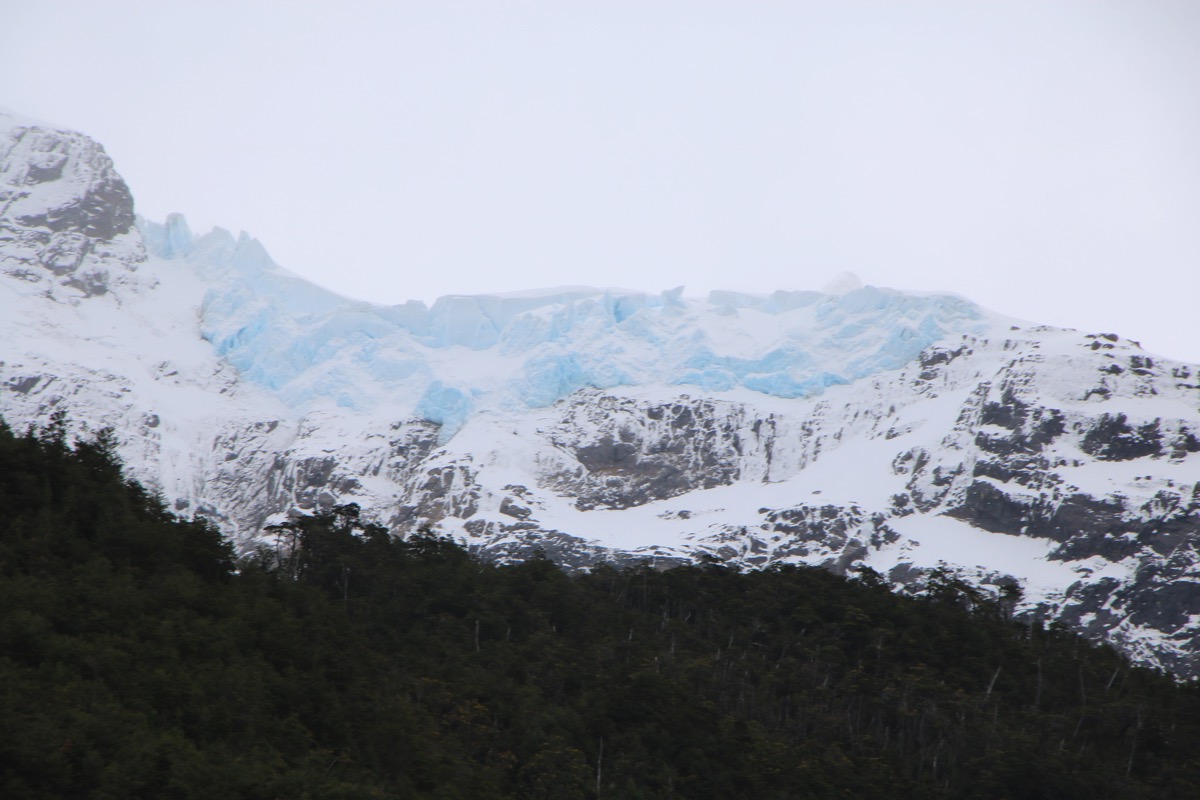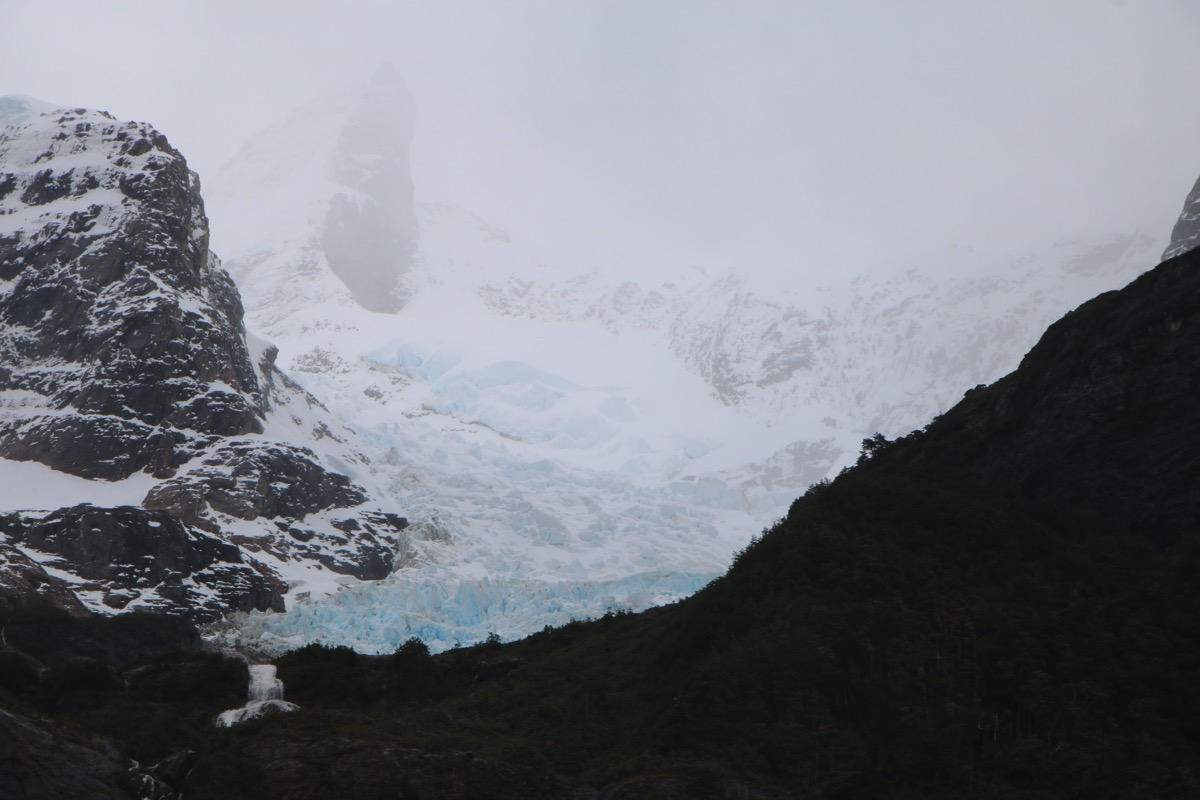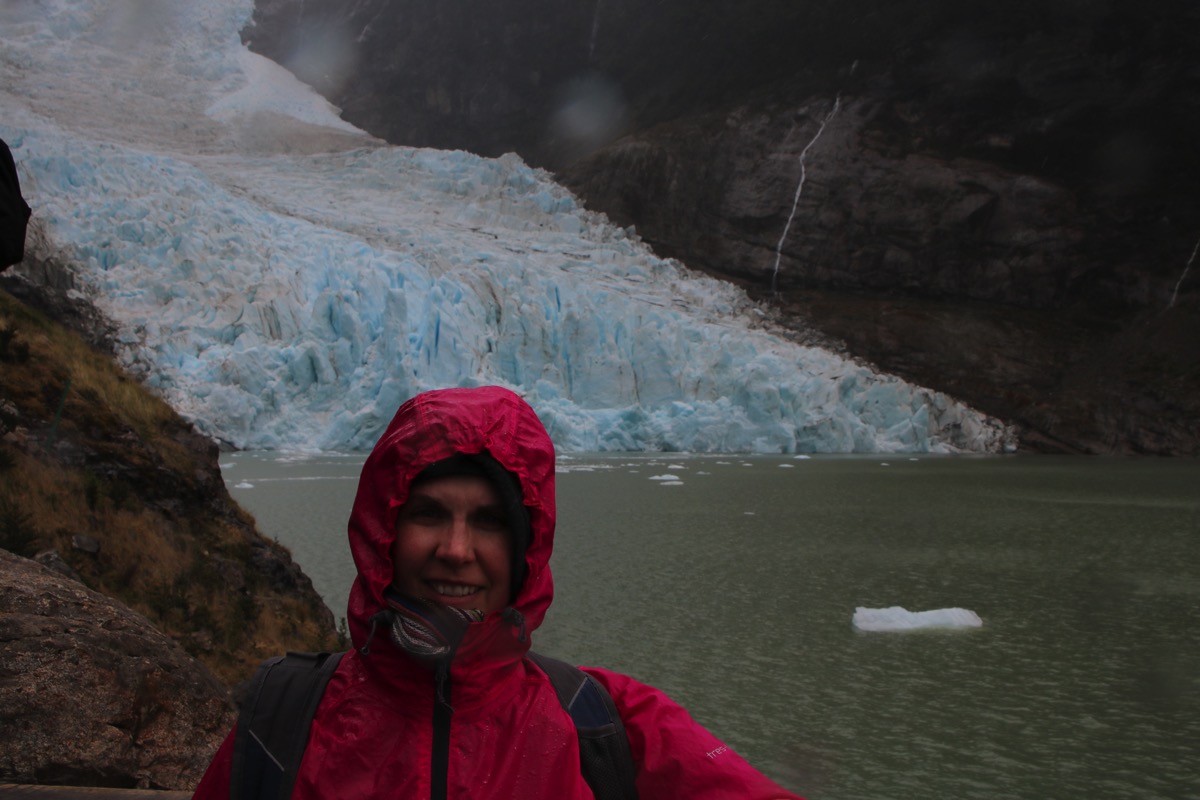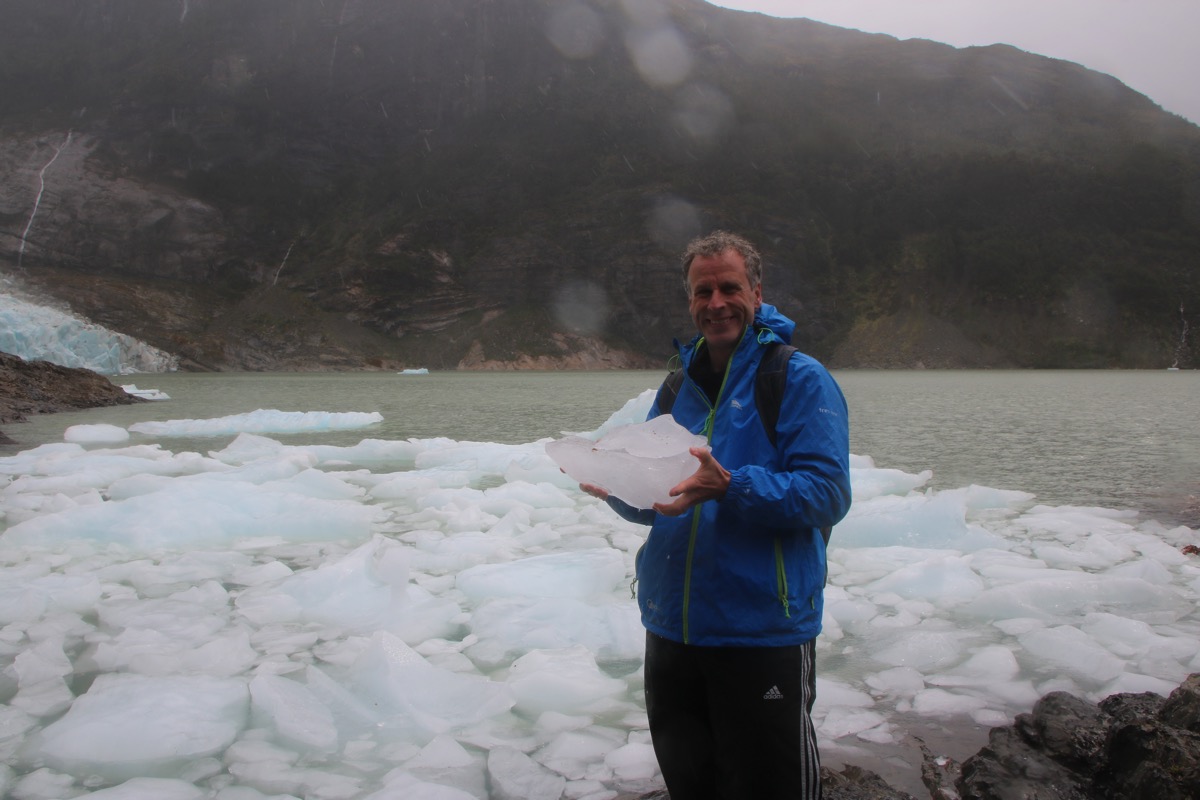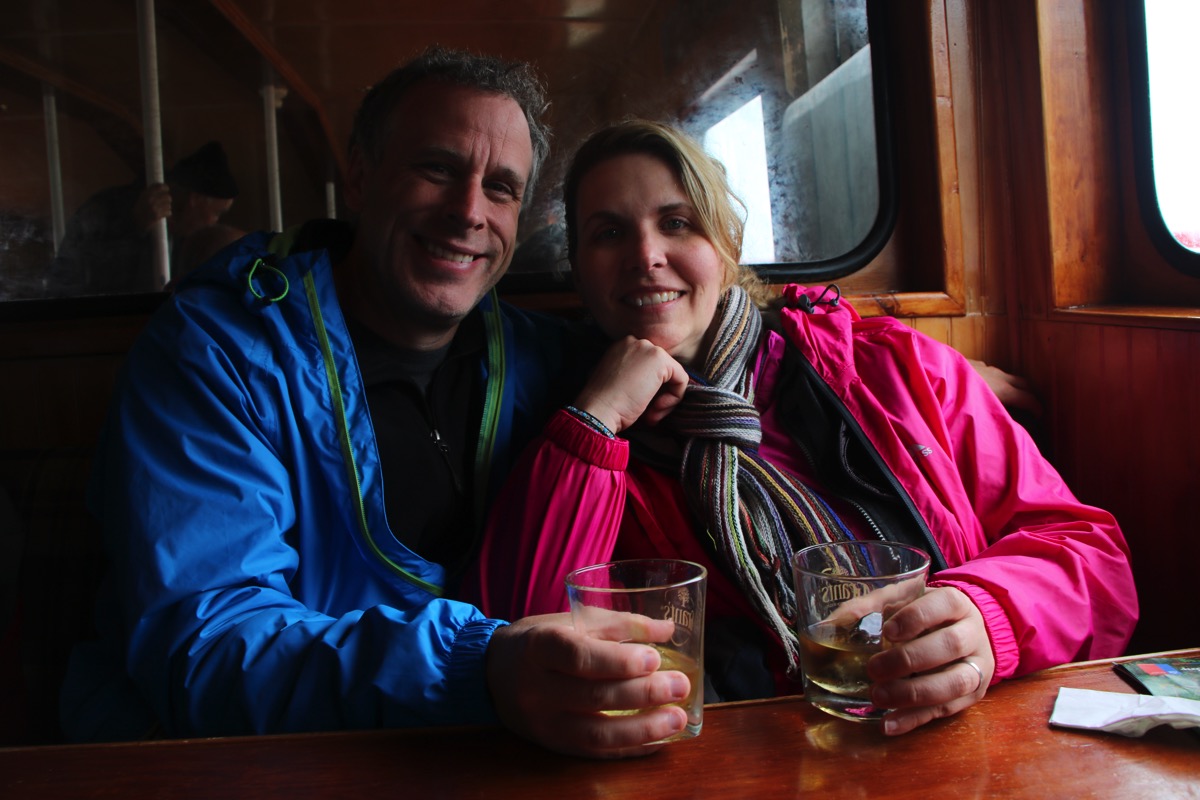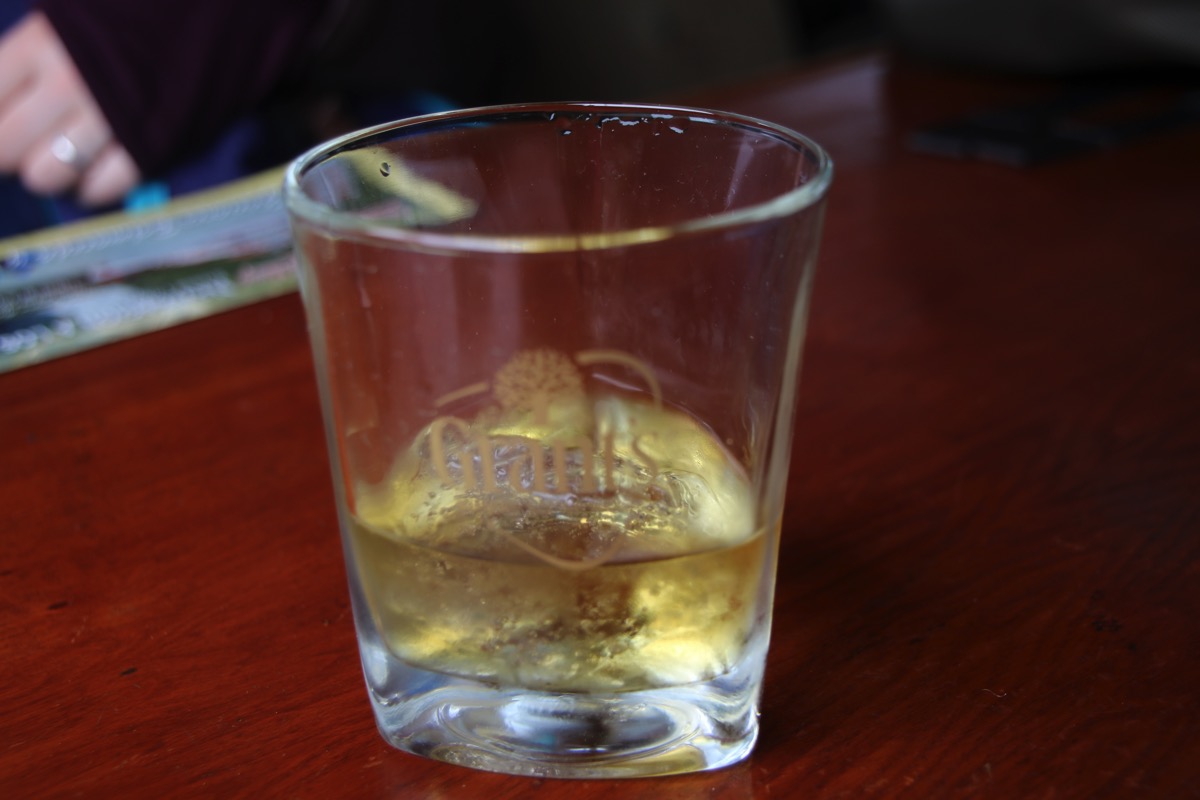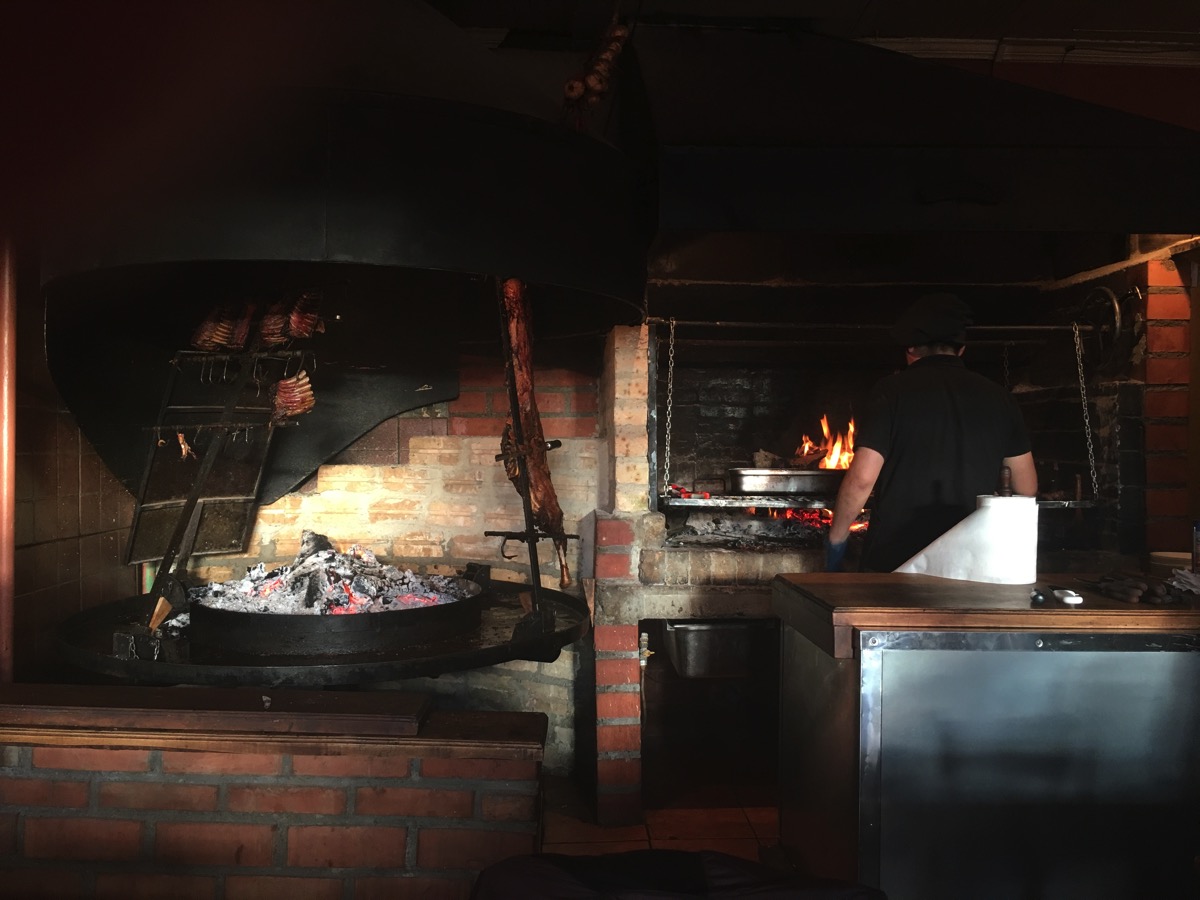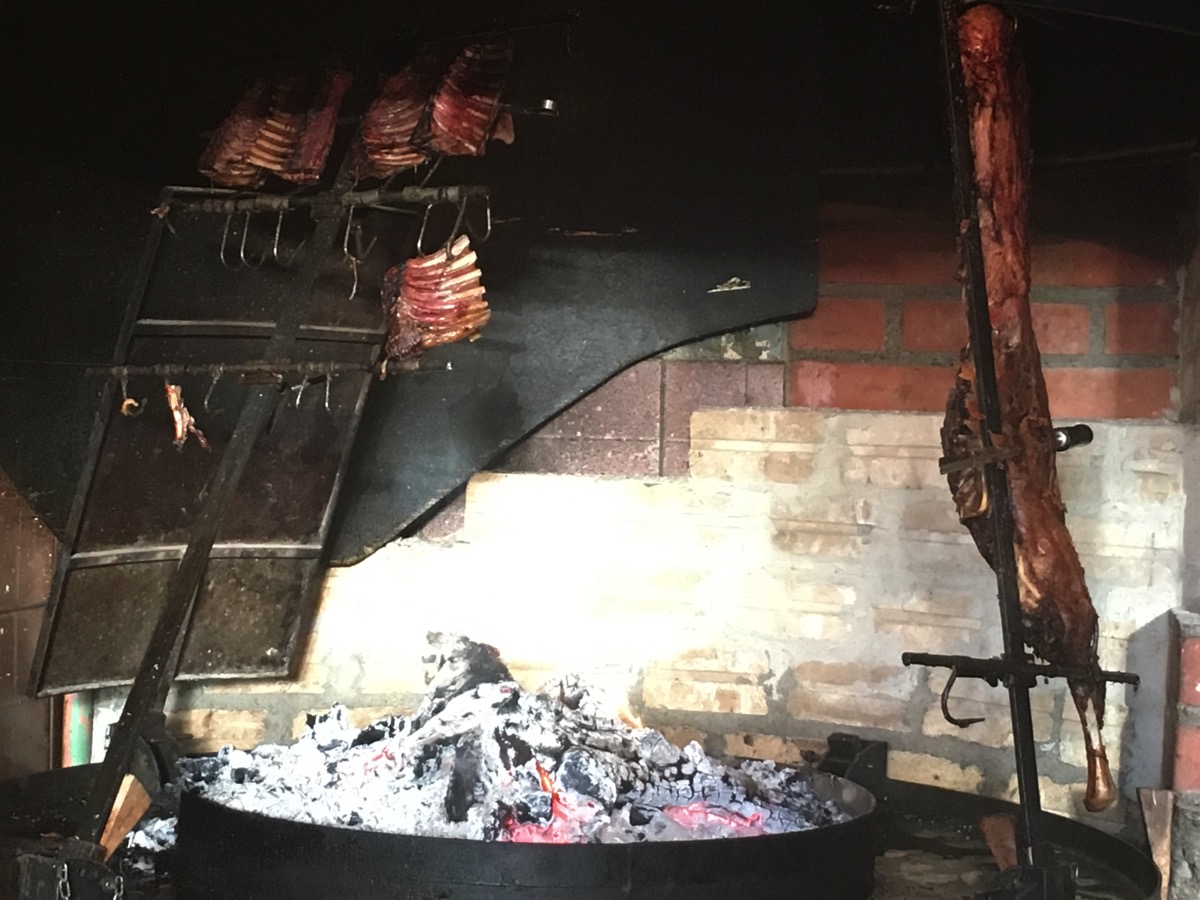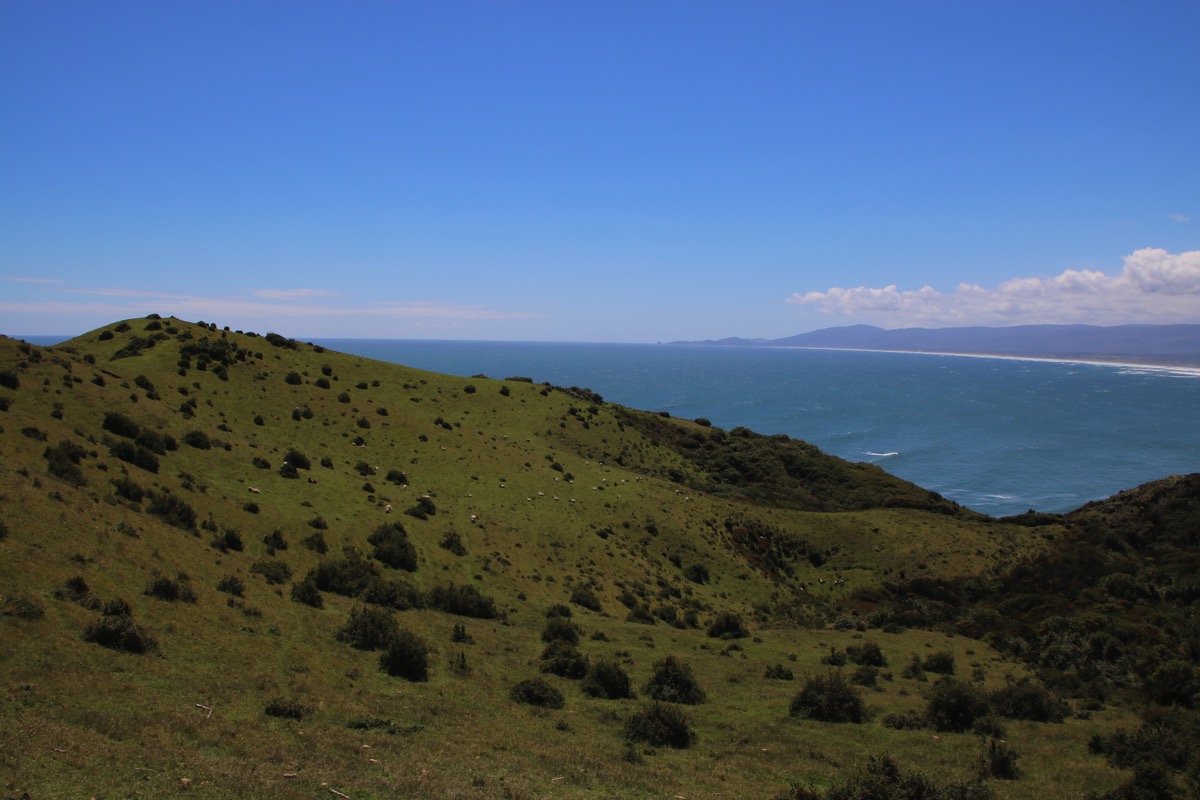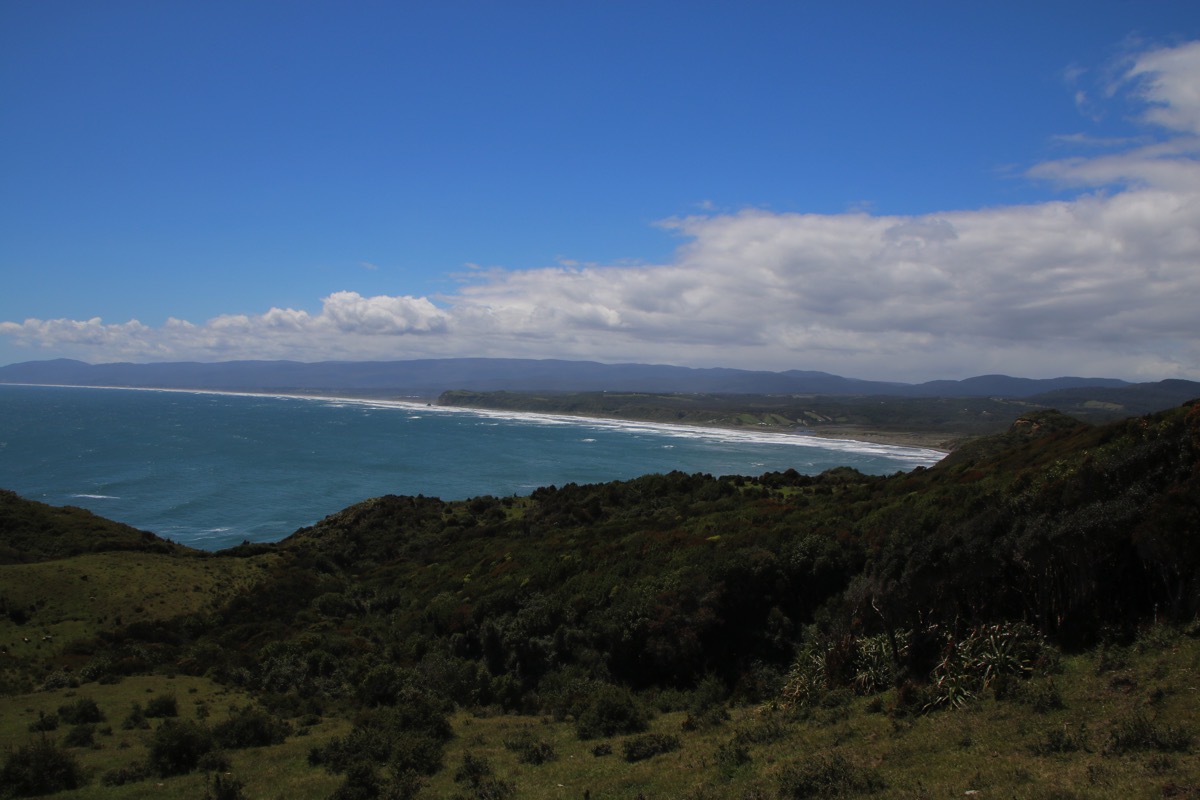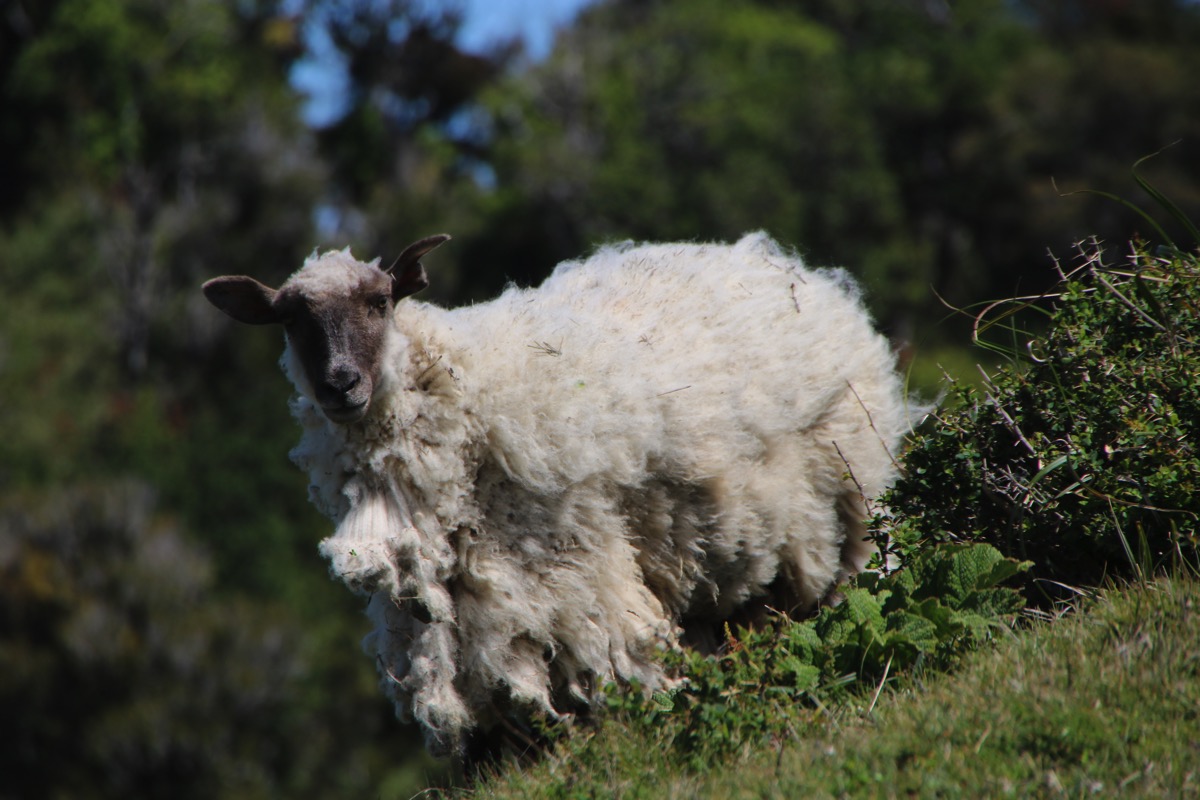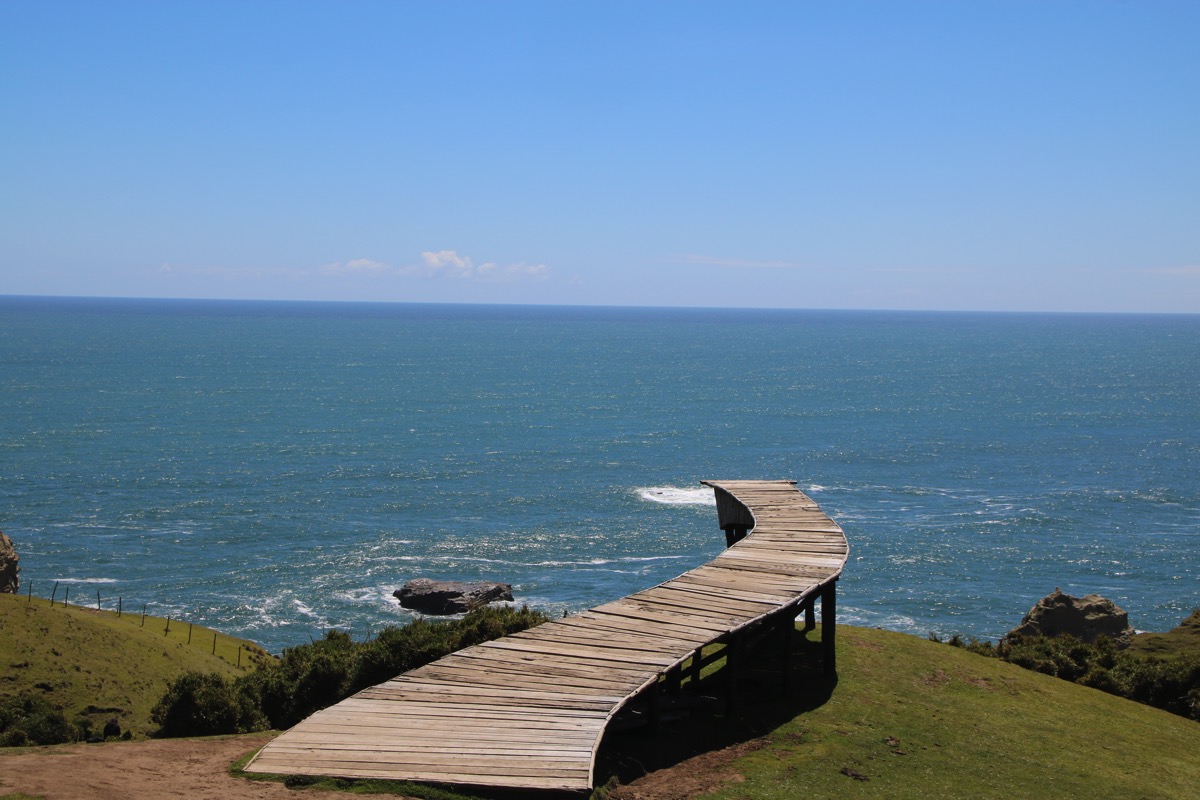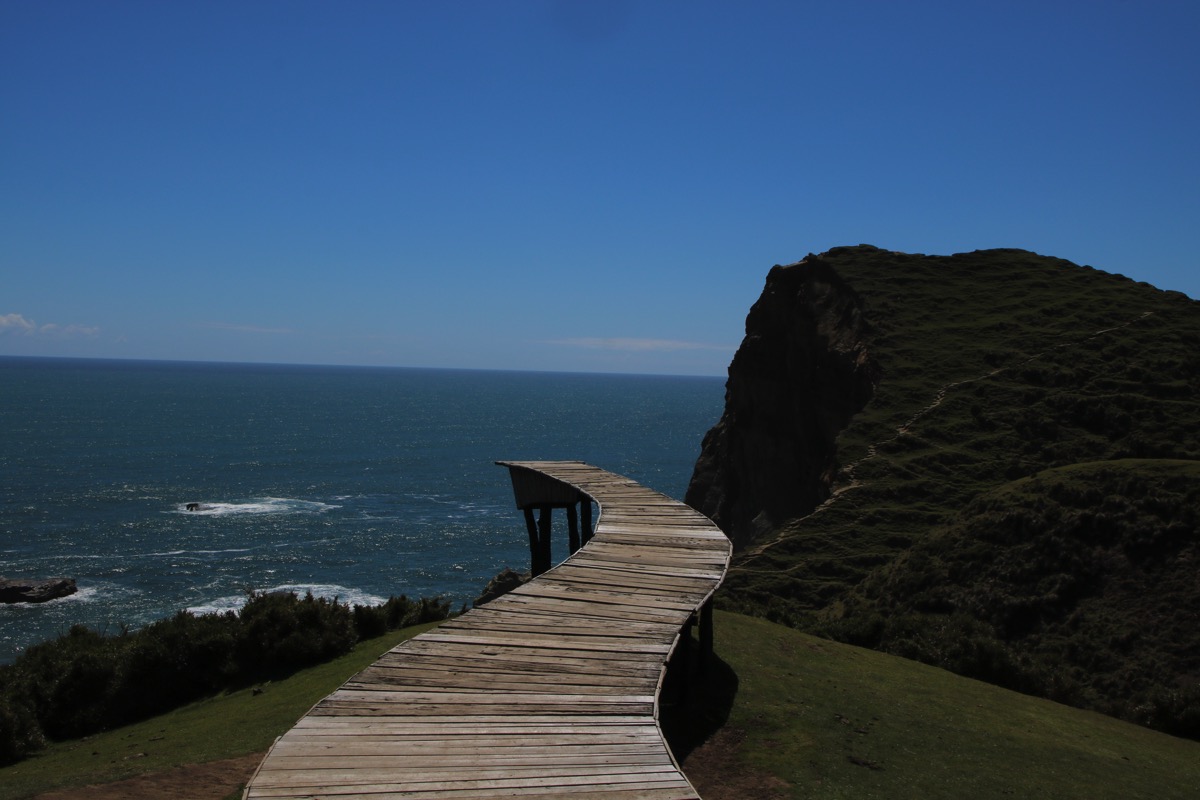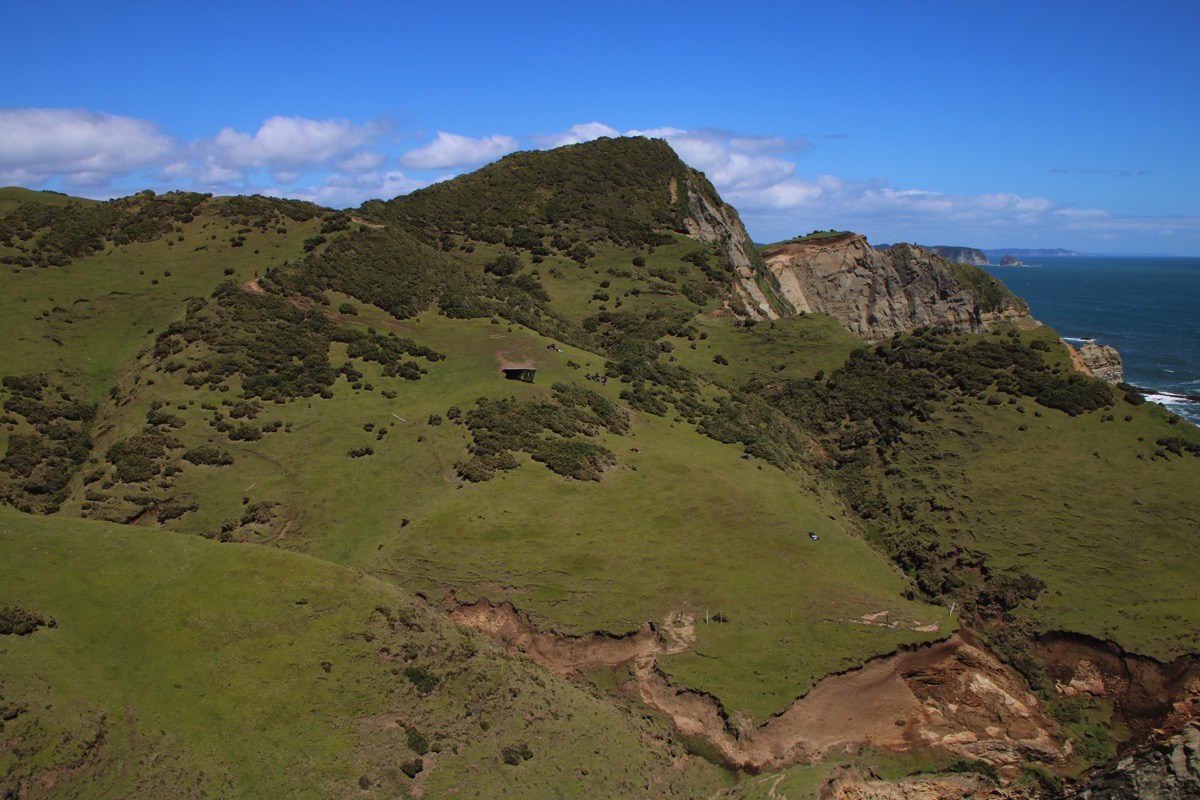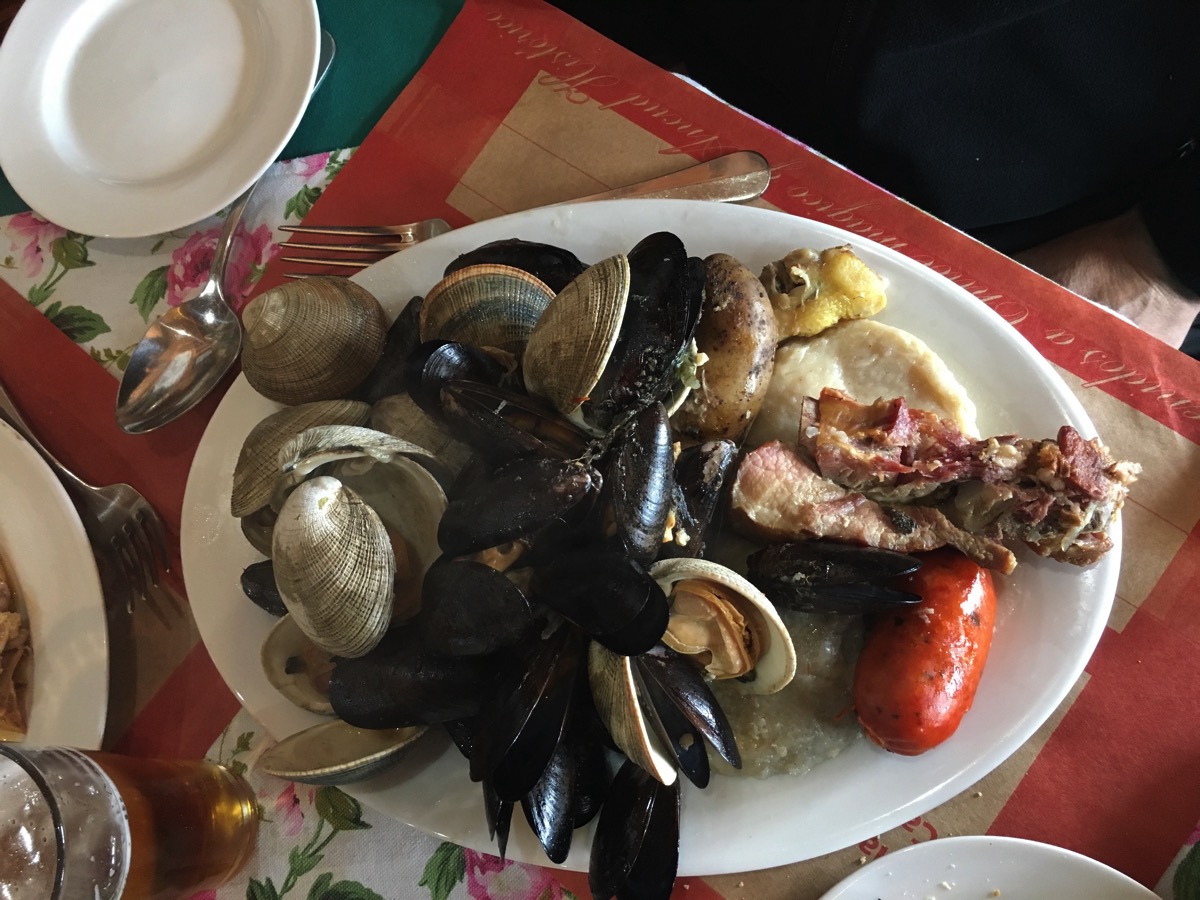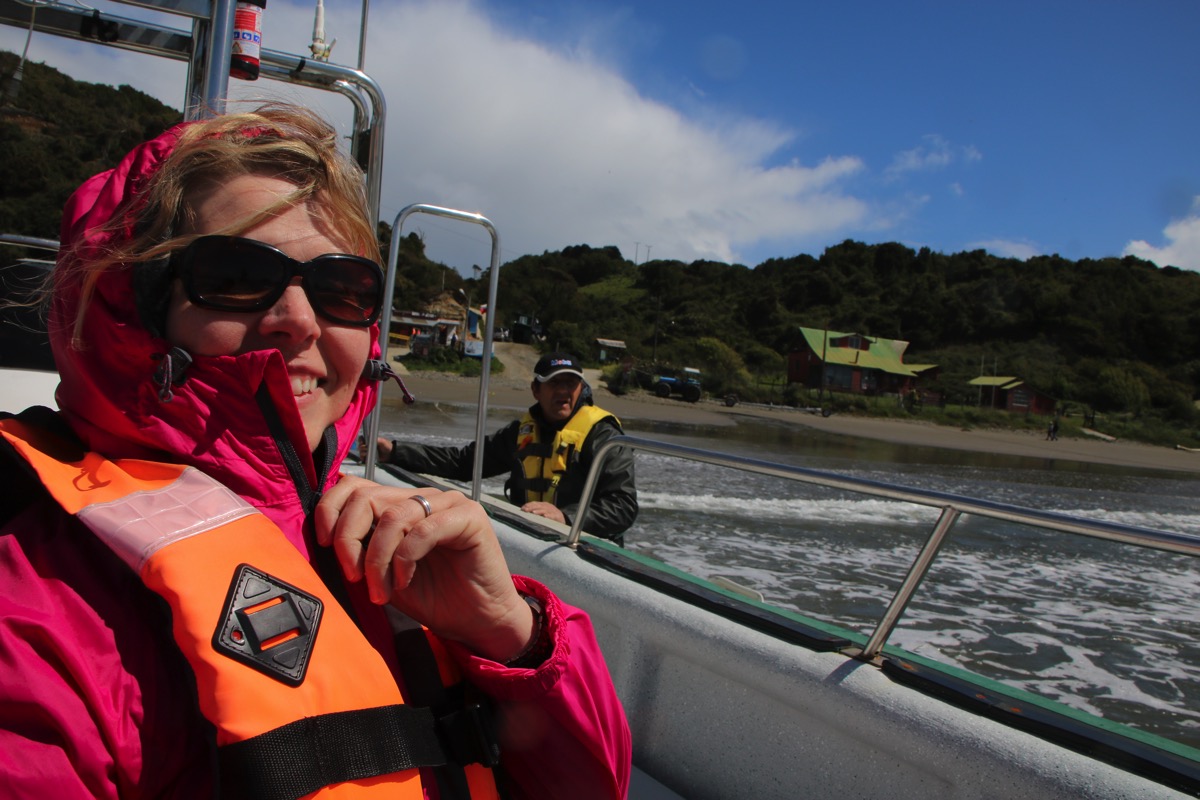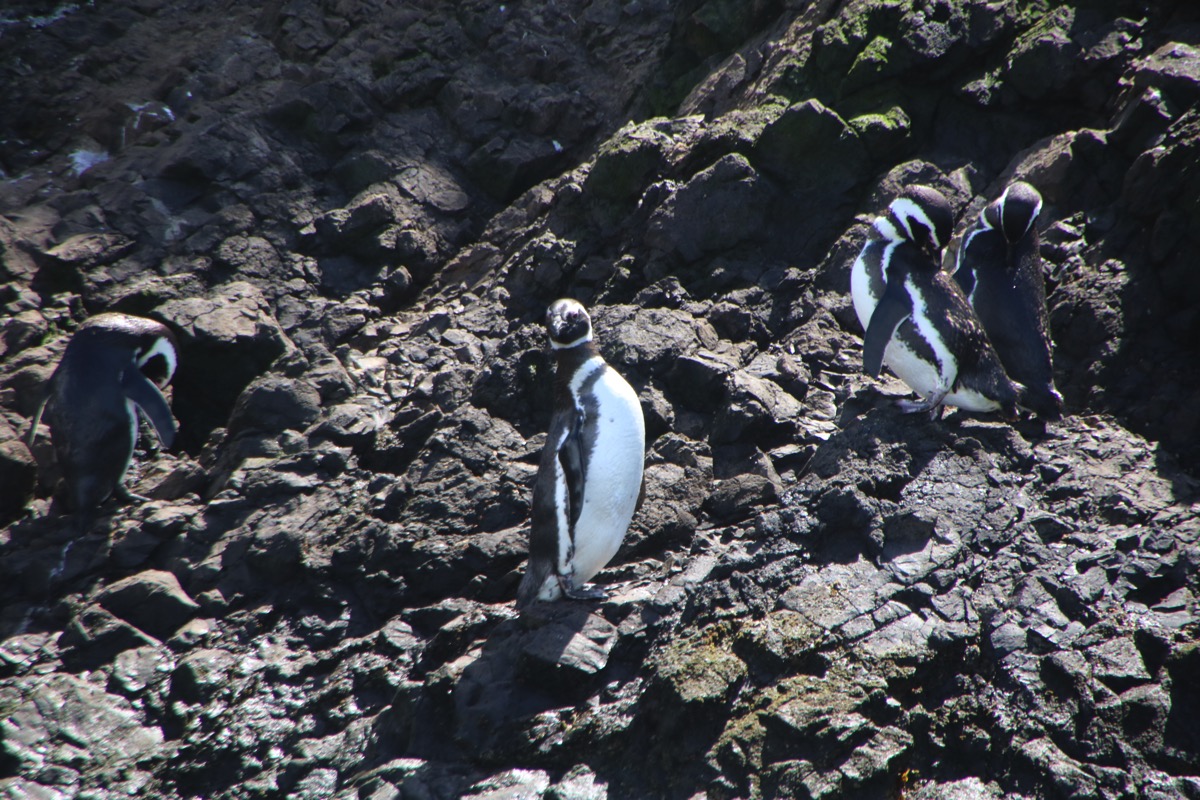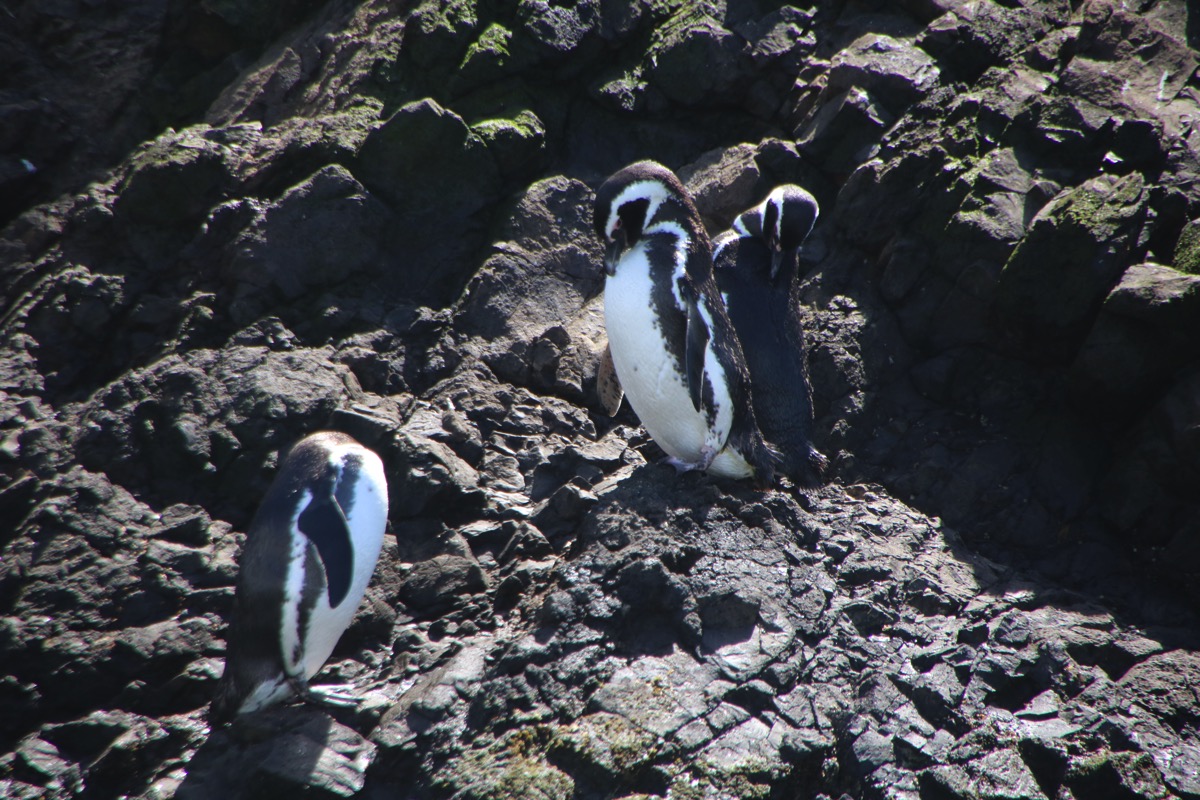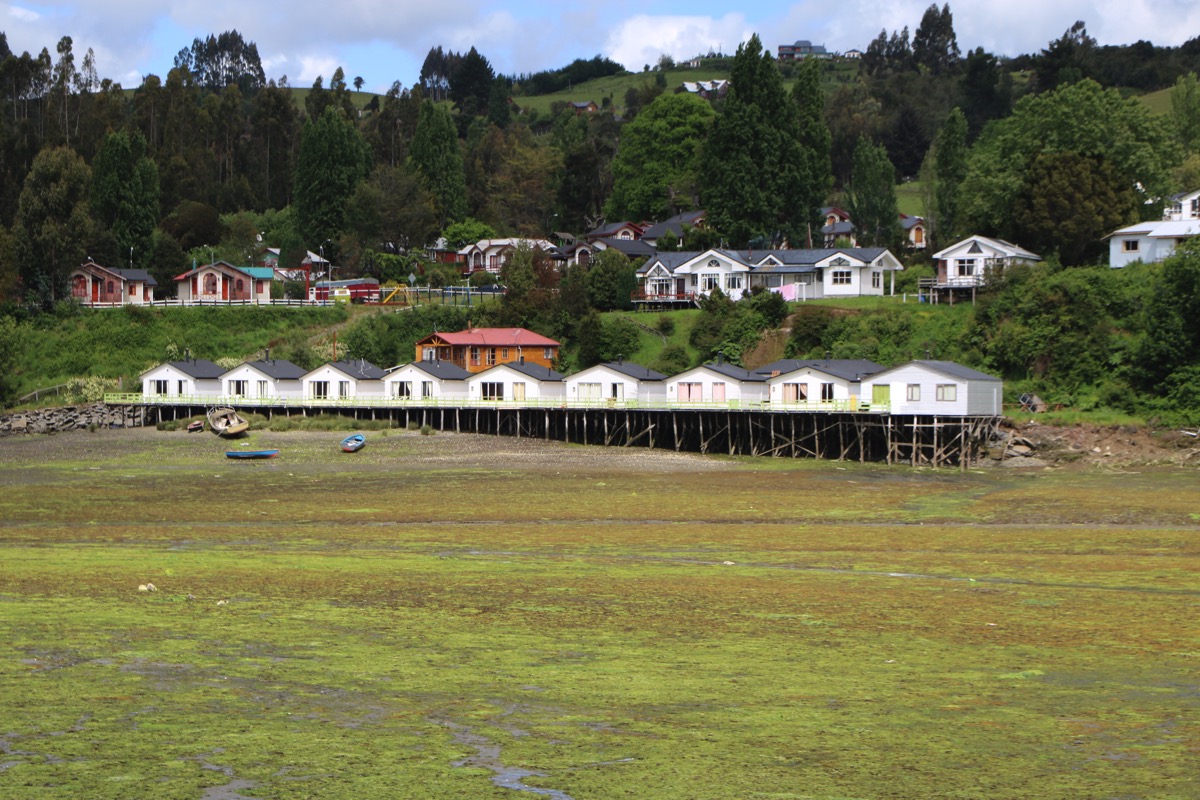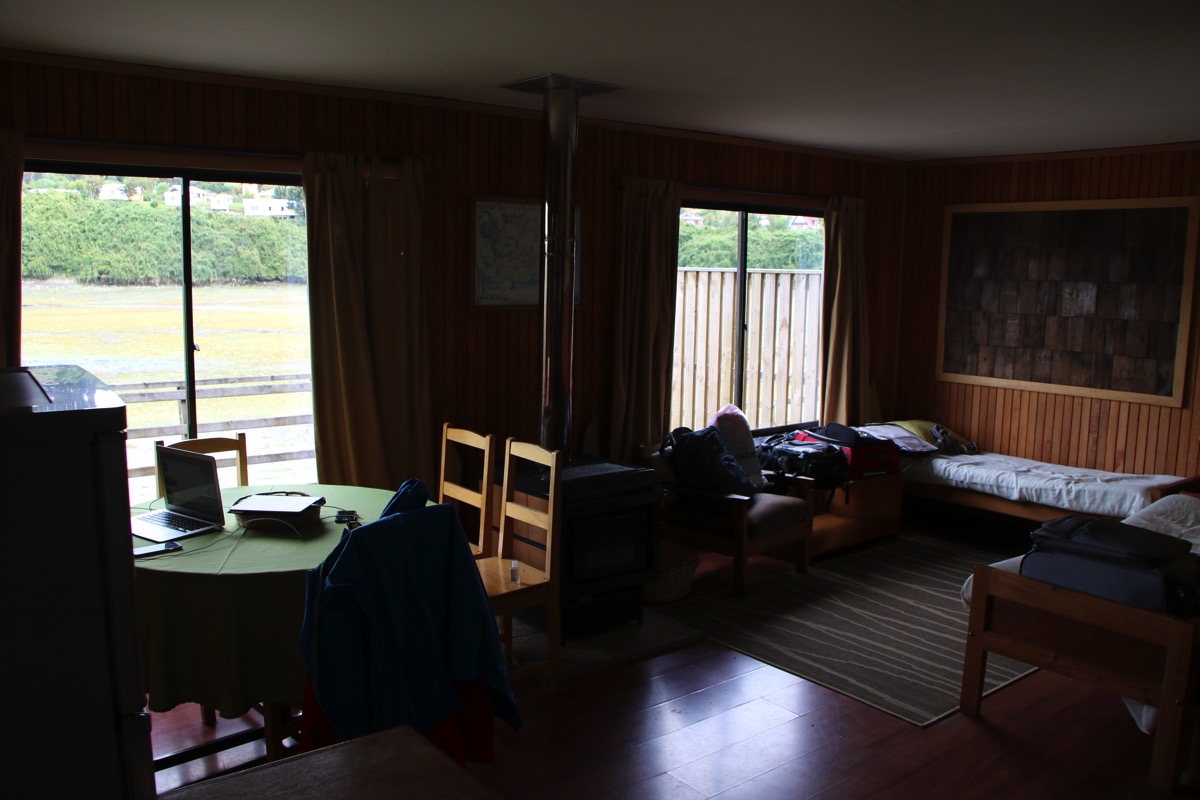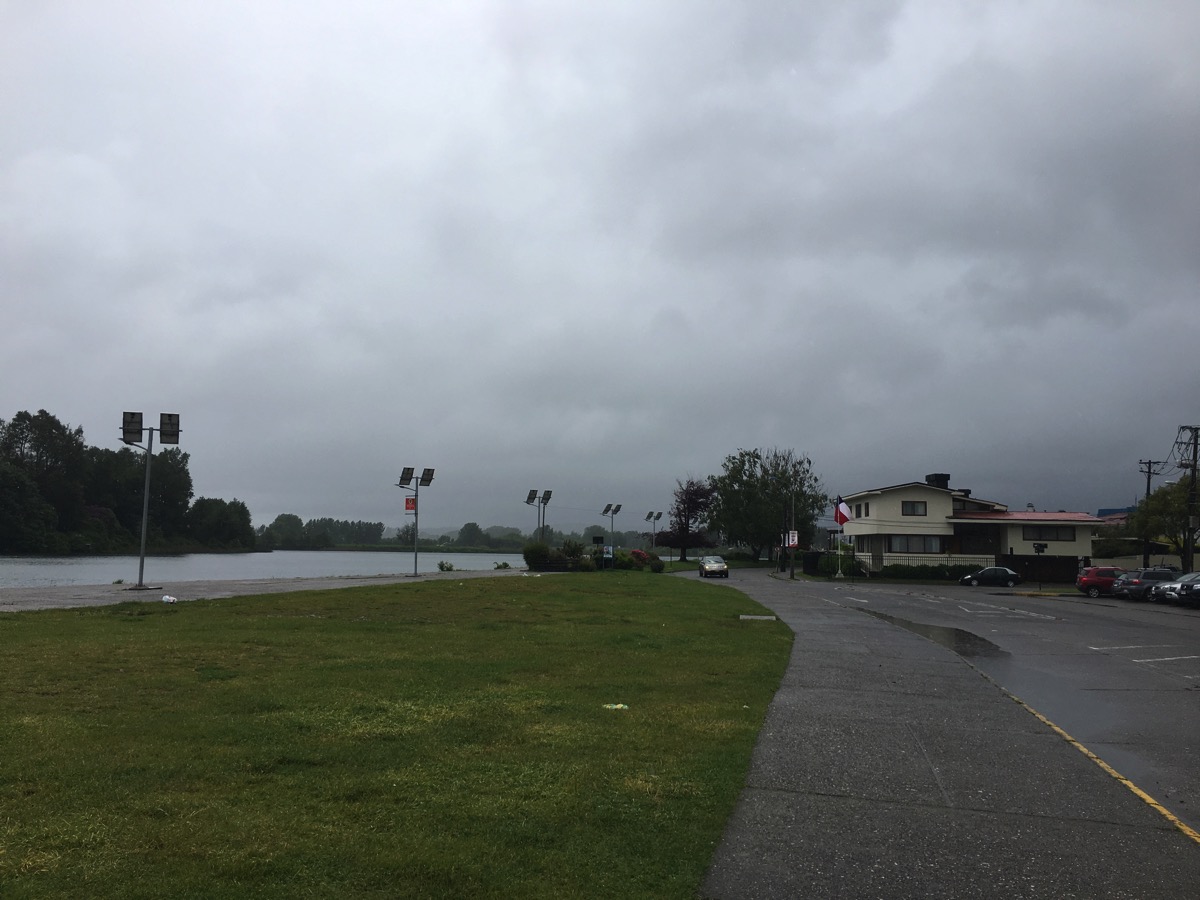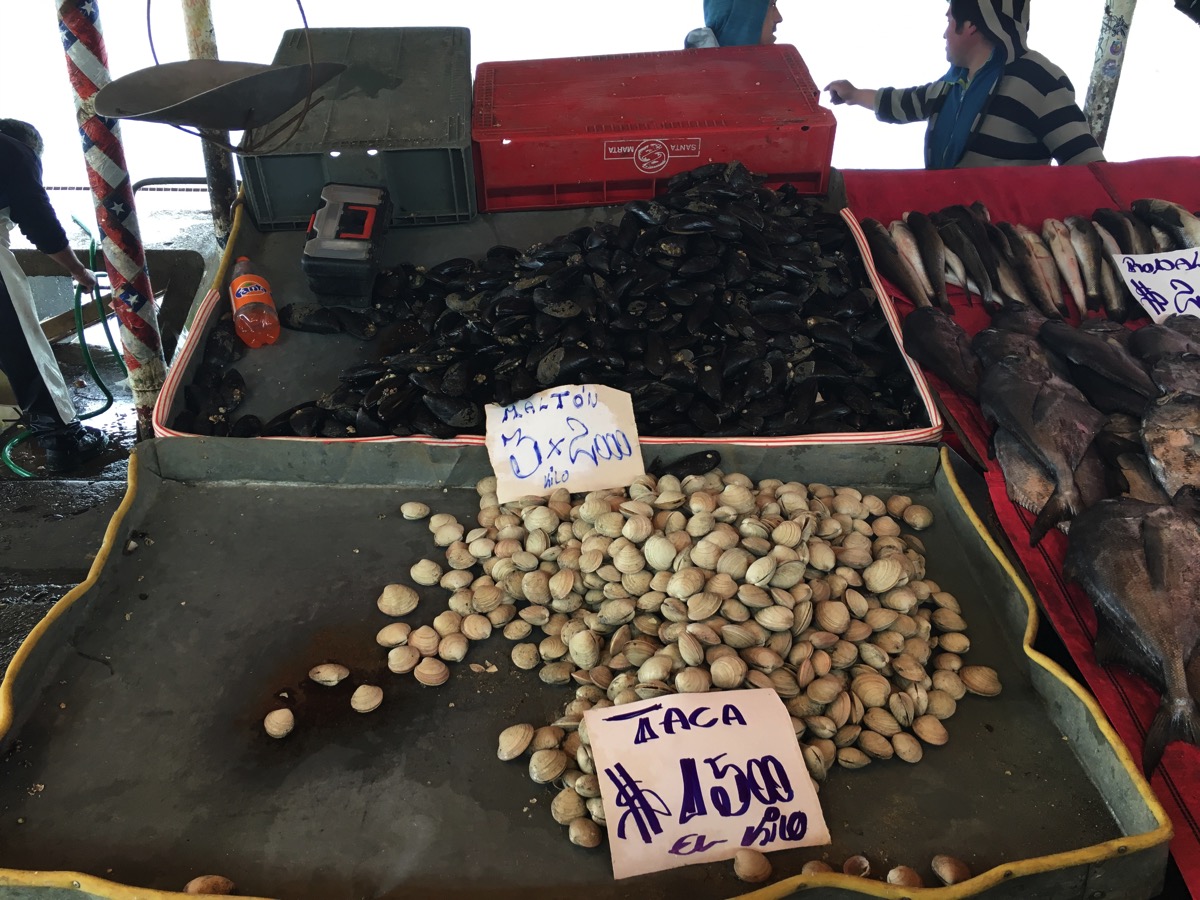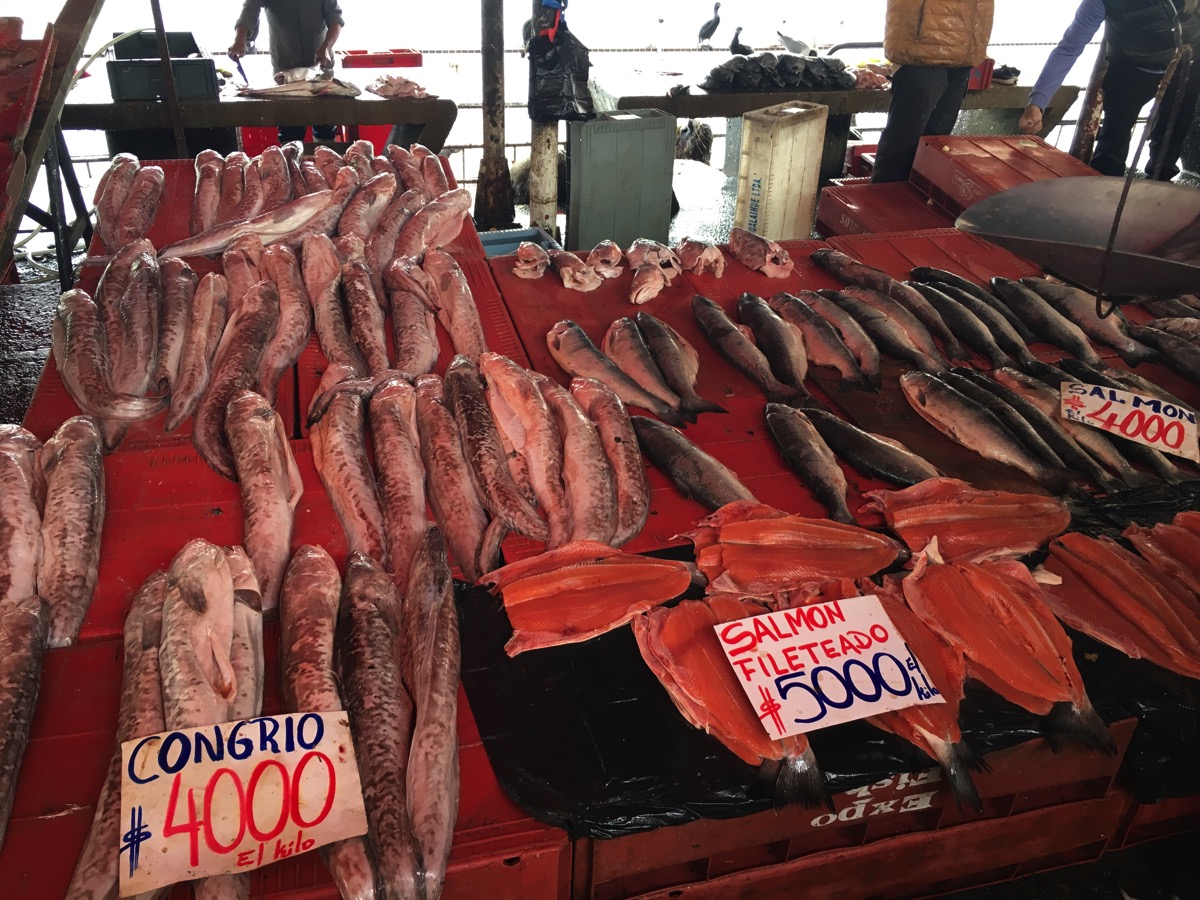It is a wonderful, sunny day here in Patagonia – perfect timing for our tour of the national park. Torres del Paine is often listed as one of the most beautiful places on earth, so expectations are high. We are booked with a guide that came highly recommended by the travelers we met from New Zealand, and the fact we will be spending the day in a 9 passenger van instead of an 80 passenger bus bodes well. For me, few things ruin seeing the sights more than a tour bus pulling up and barfing out a huge mass of sheeple.
Spoiler alert – this place is absolutely spectacular. The pictures don’t do it justice at all, and I’m struggling mightily to decide which ones to include here. There are so many that give just a glimpse of the scenery here, so prepare for a whole lot of scrolling…
The park is about 90 minutes from Puerto Natales, and our first stop is a viewpoint overlooking Lago Sarmiento. It is also our first glimpse of the namesake towers – two of them at least.
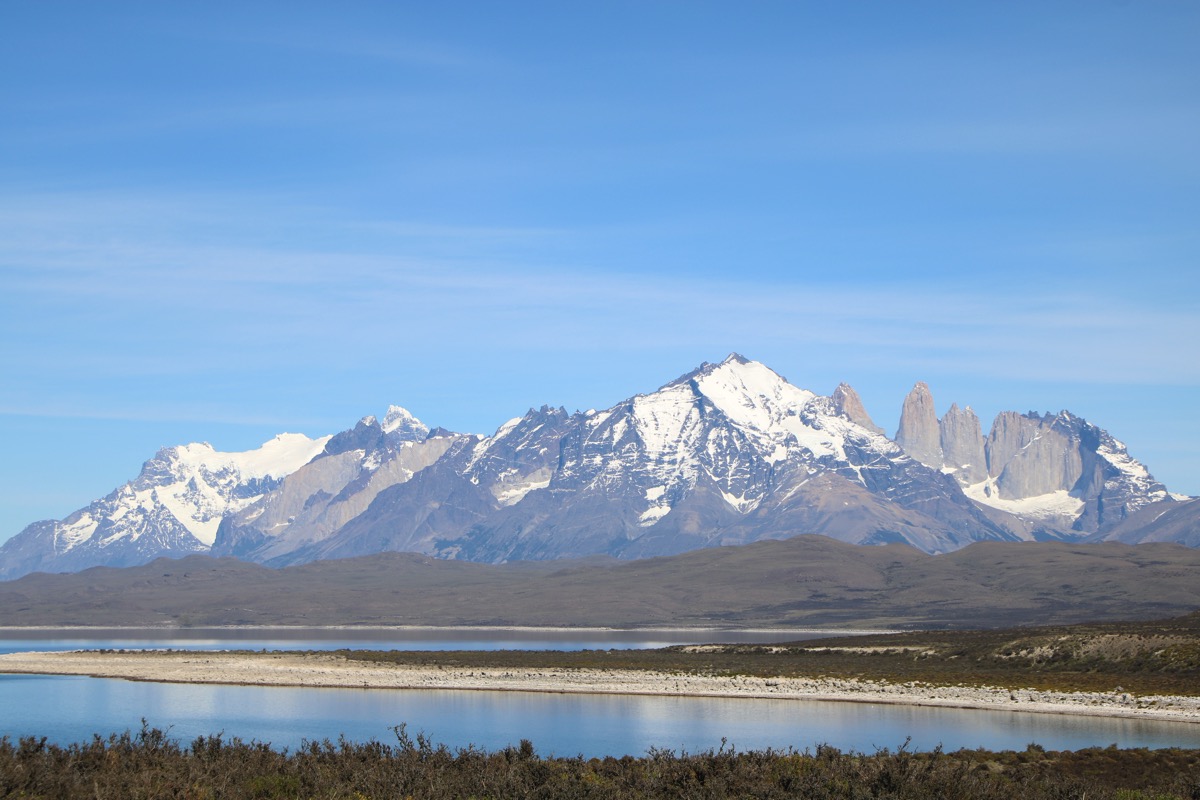
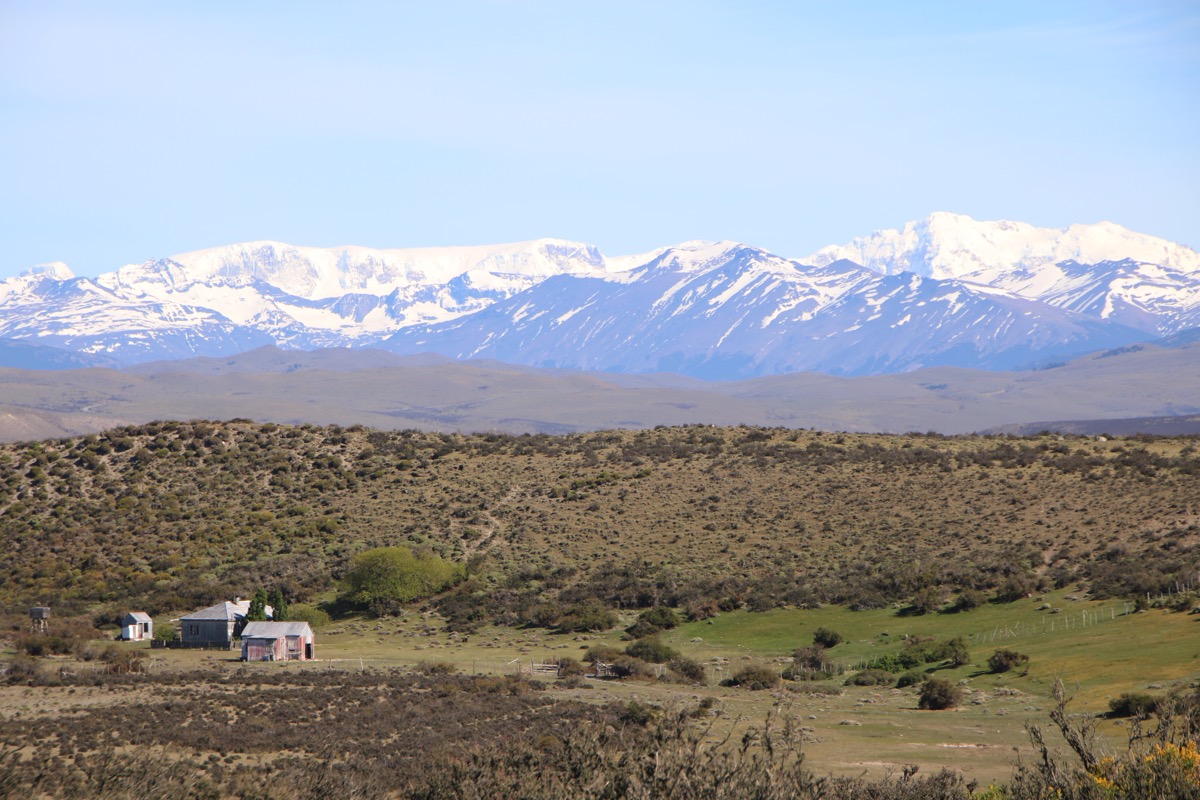
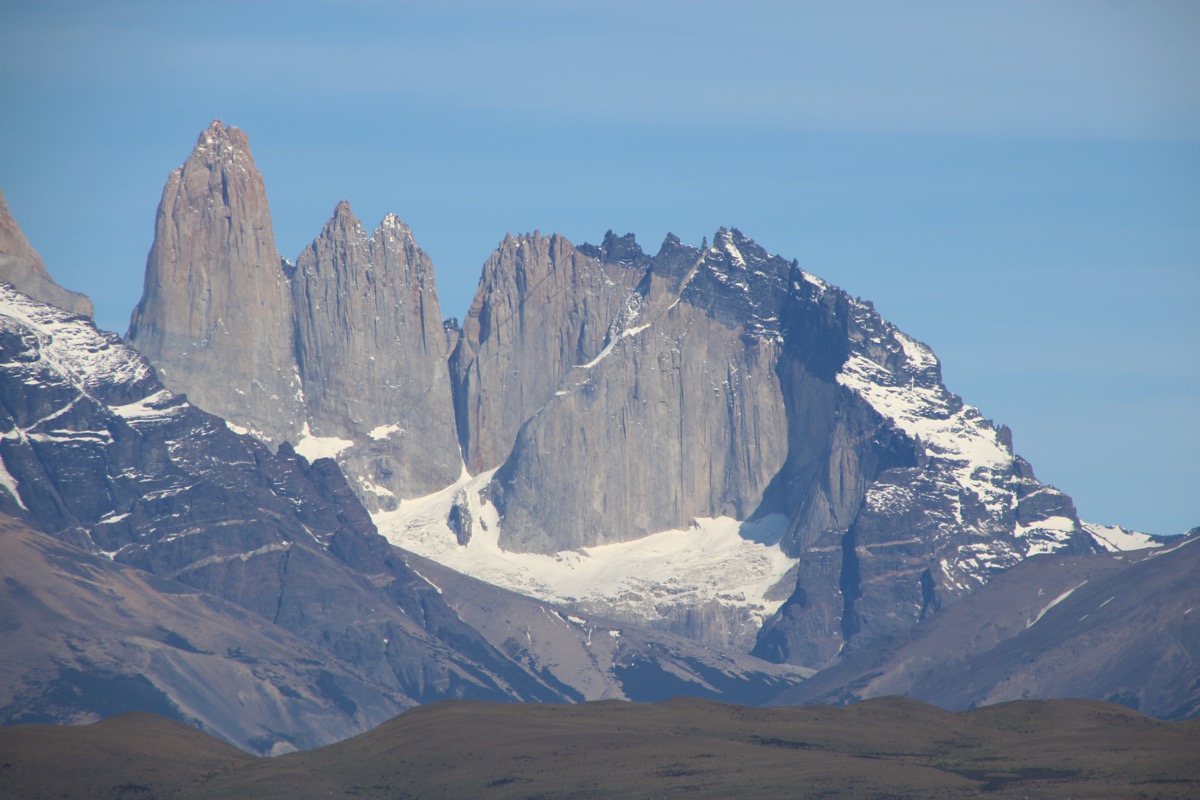
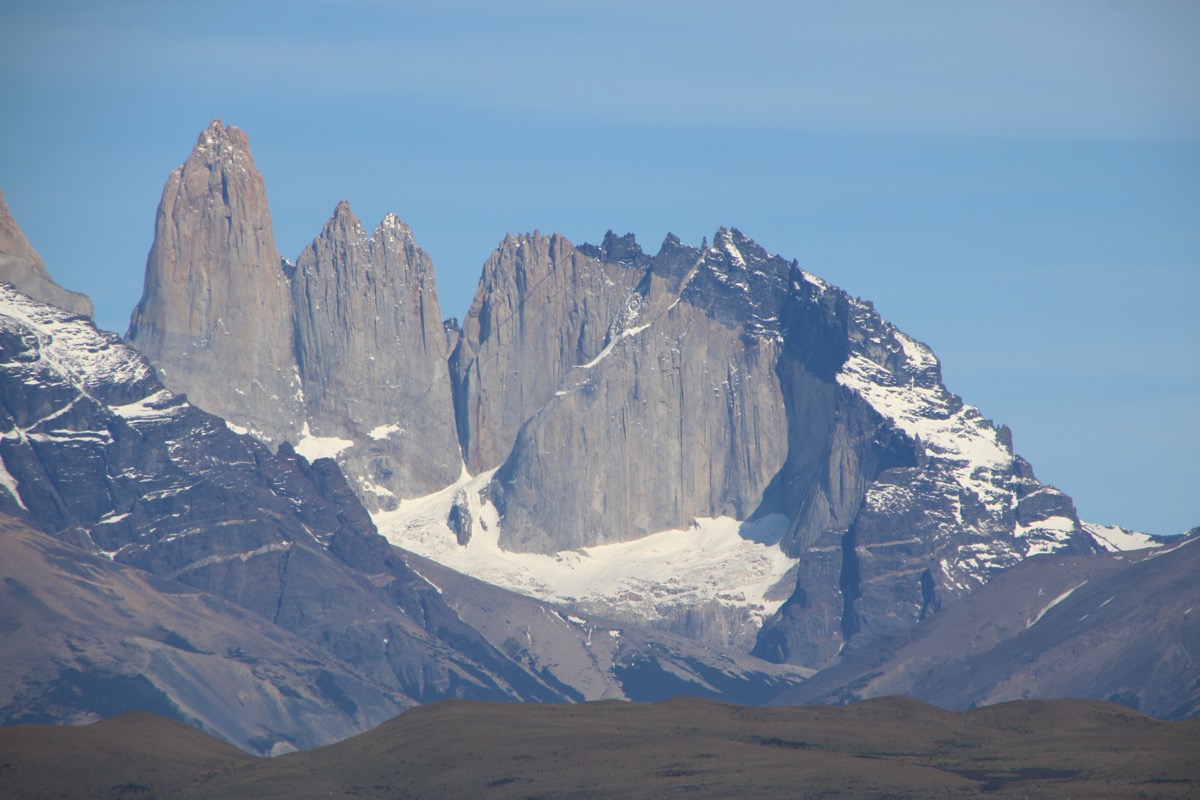
On our way to the next stop, we get some great opportunities to see the local wildlife. The rhea (similar to an ostrich) is the largest bird in South America, and much to my bus buddy’s delight, it’s the the of year when the eggs are hatching. Years ago, this was a tasty treat on many dinner tables, but everything is protected nowadays and this family doesn’t seem that nervous having us around.
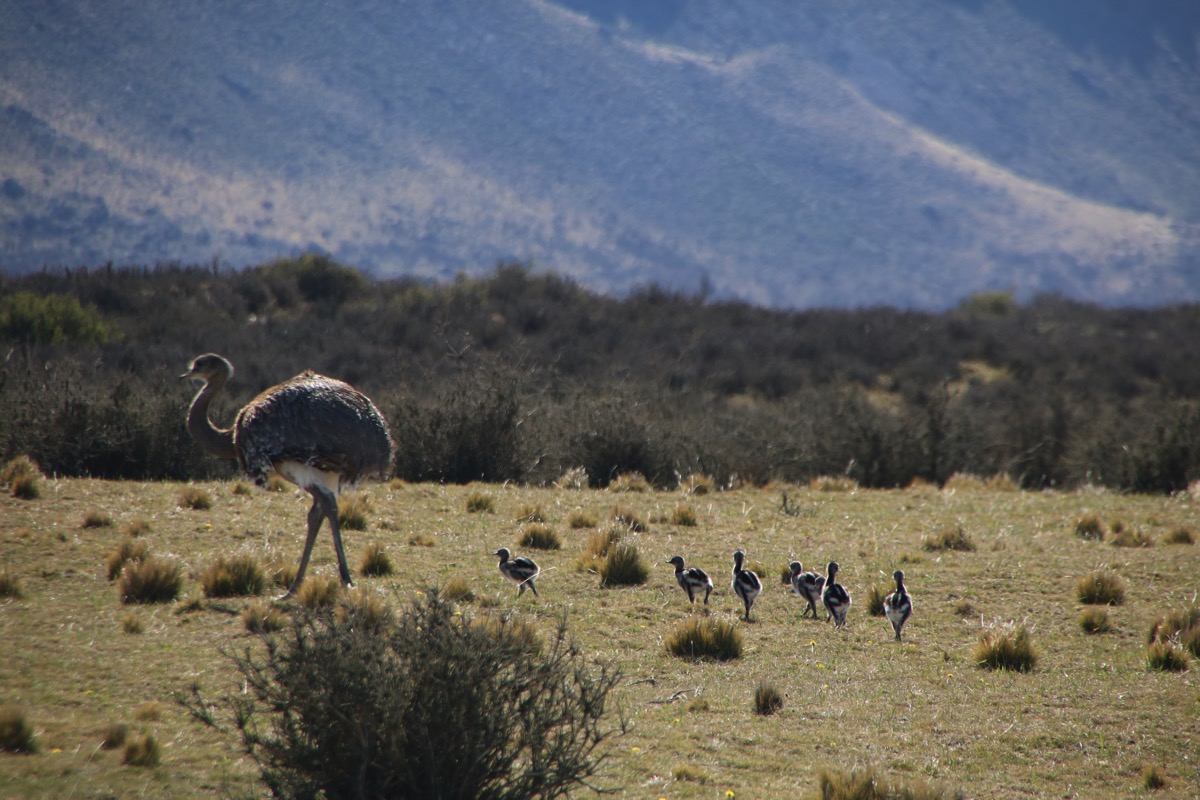
Another culinary staple of the original inhabitants here is the guanaco. It is part of the same family as llamas, vicunas and camels, but the only one to have never been domesticated. It did make a great source of food and clothing however, with a taste, according to our guide, similar to young horse. Yum.
Since they are off limits now to people, their main predator is the puma. So while the rest of the group grazes lazily on grass and leaves, one guanaco heads up to the top of the nearest hill to serve as a lookout. In the event he spots anything shady, he bellows out an alarm. Pumas, it seems, haven’t quite figured out the best strategy is to take out the spotter first.
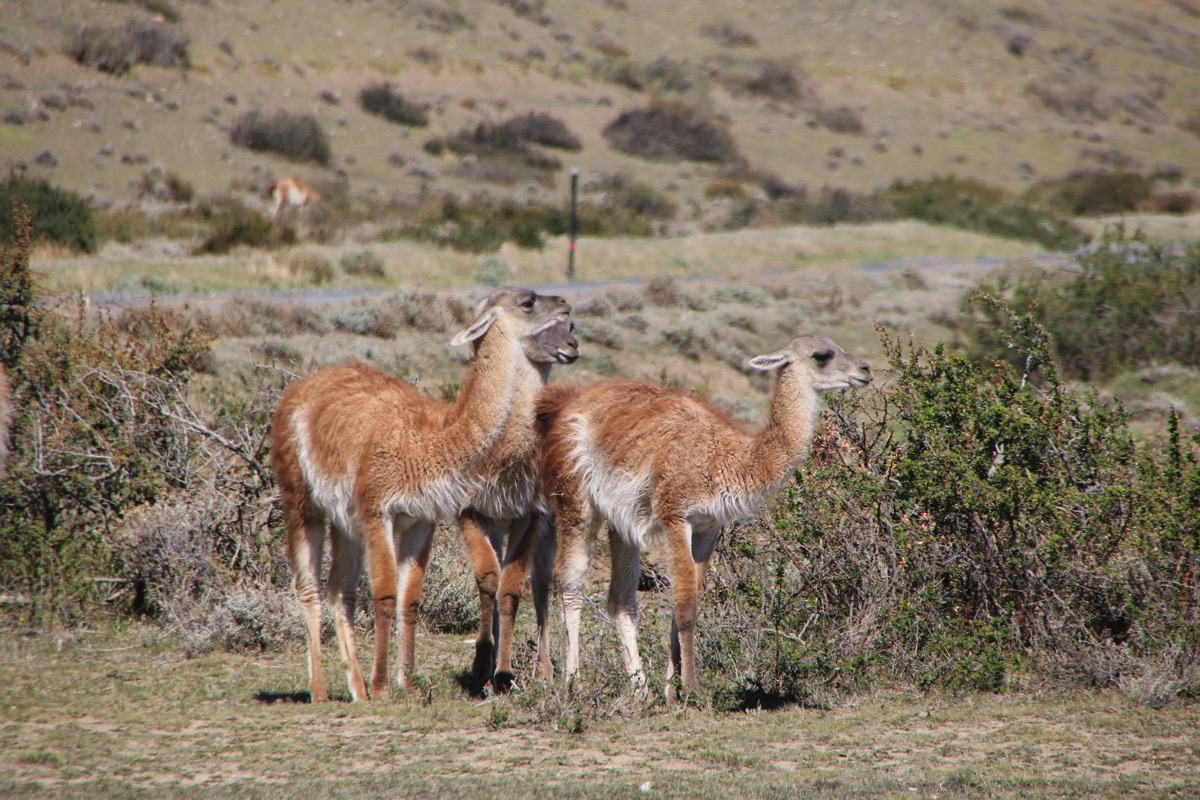
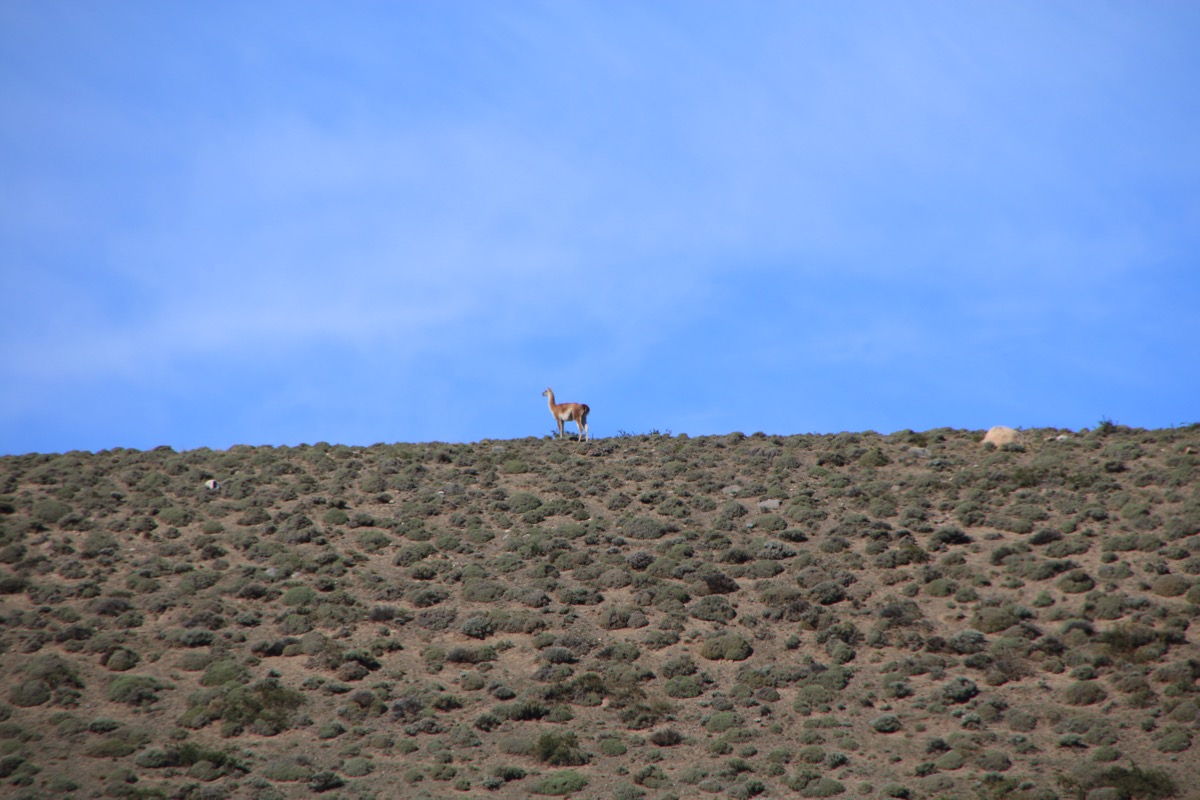
Back on the road, we pull over for a few quick photos at Laguna Amara. There is, uncharacteristically for Patagonia, almost no wind today, and the mountains reflecting off of the water makes for a great view.
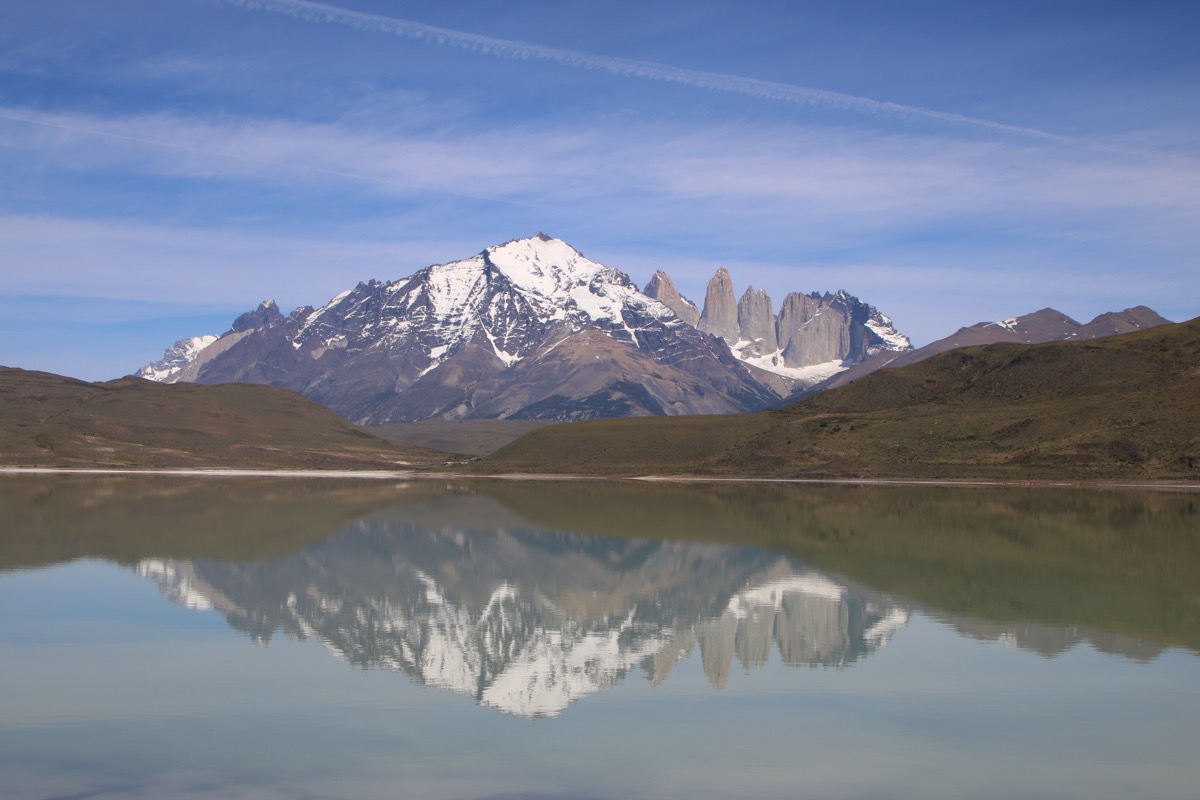
From there it is on to a set of small waterfalls. Almost all of the lakes and rivers here are connected and our guide points our the route from the ice fields high in the mountains all the way to the ocean. Apparently, there is usually a lot more water this time of year but, like many places, not as much snow is falling in the winter. I’m still impressed though, and I say that being a bit of a waterfall aficionado.
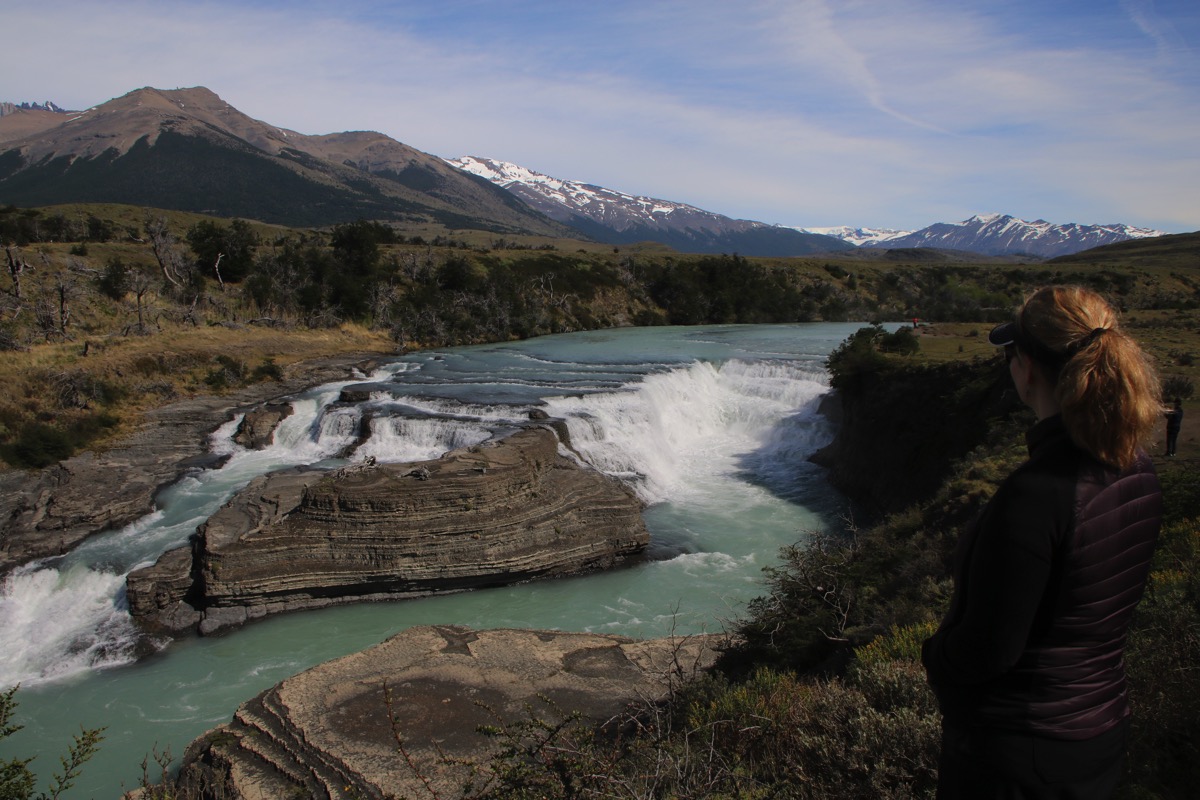
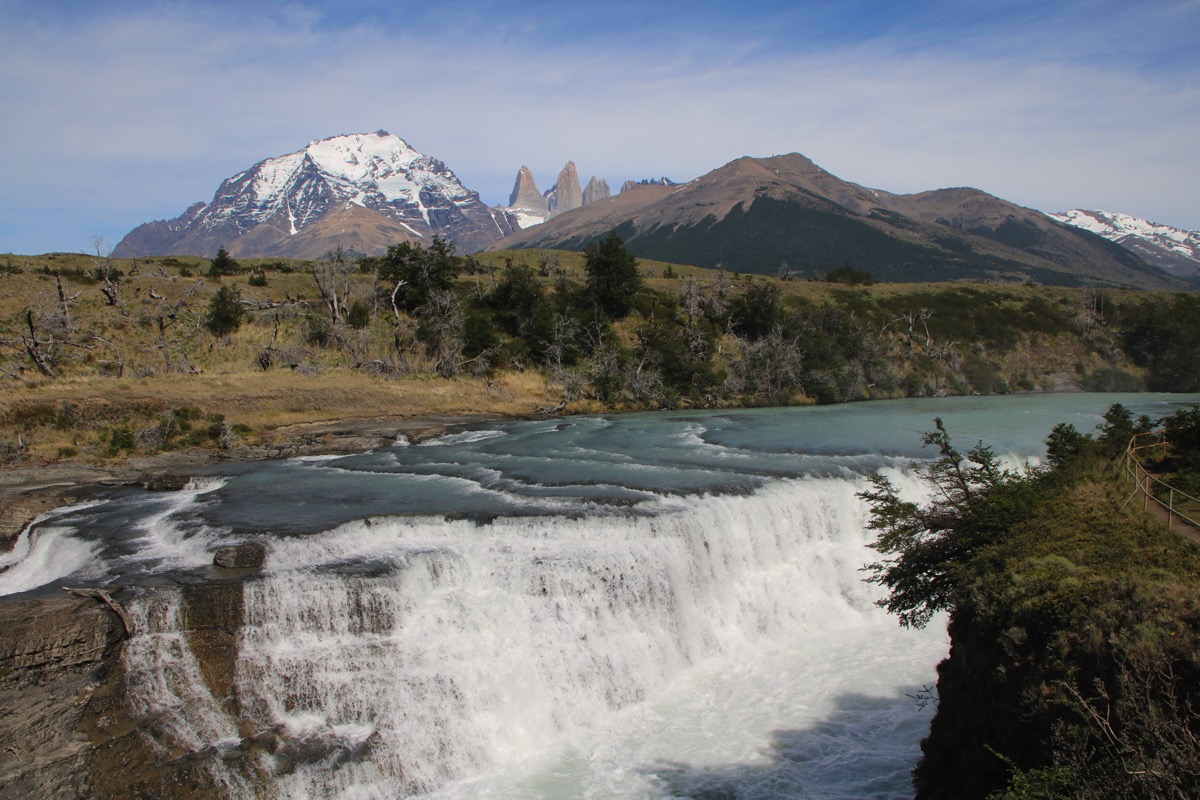
Now one of the great things about a small tour with a local guide, is that they know the spots the bigger tours don’t bother with. Out of nowhere, we pull over to the side of the road, and after following her up a hill with no discernible trail, we cross over the ridge of a huge valley, with not a soul in sight. I won’t even try to describe how stunning it is because my words simply can’t do it justice. If we just sat here on the rocks the rest of the day and stared out over the landscape, it would still be our best day ever.
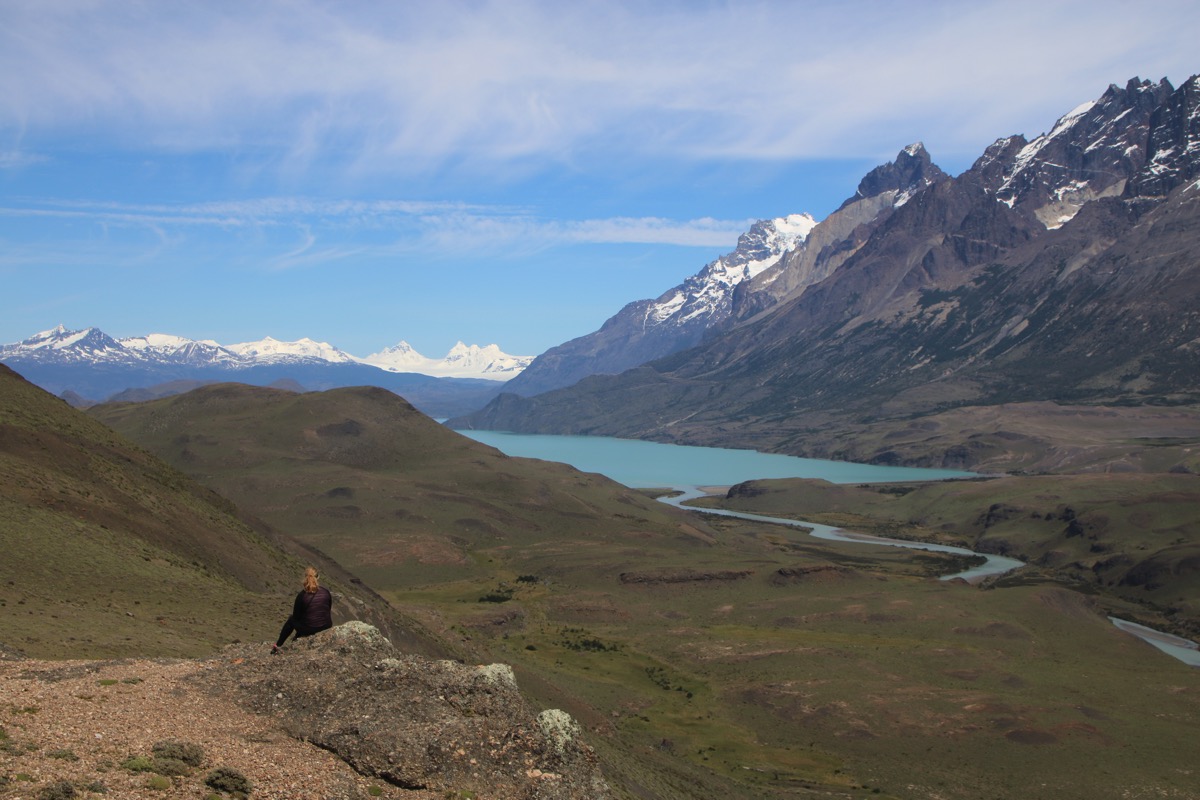
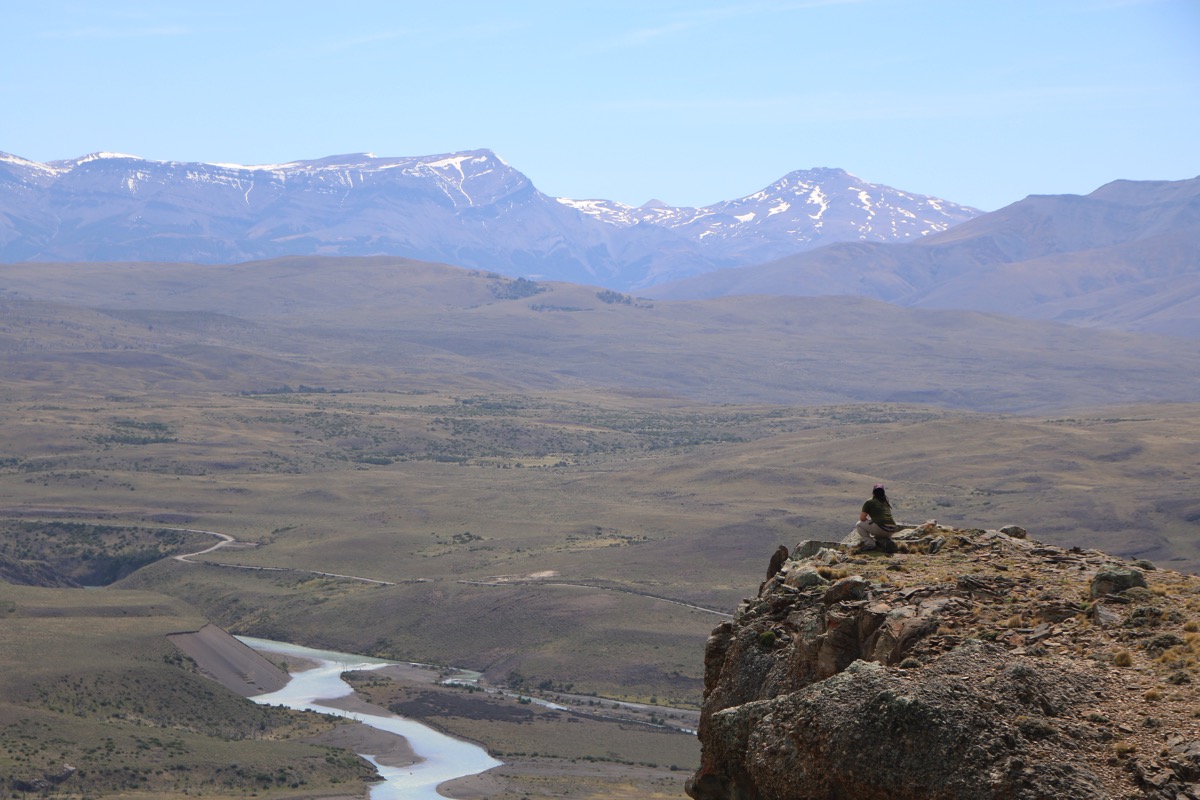
Still more to see however, so back in the van to our final stop before lunch, a 30 minute hike to the Salto Grande Rio Paine. This is a regular stop on the tour bus circuit, but steeple generally stick to the easiest paths and we are able to miss most of them by taking the road less travelled (hmmm, there’s probably a lesson in that – someone should write a poem about it).
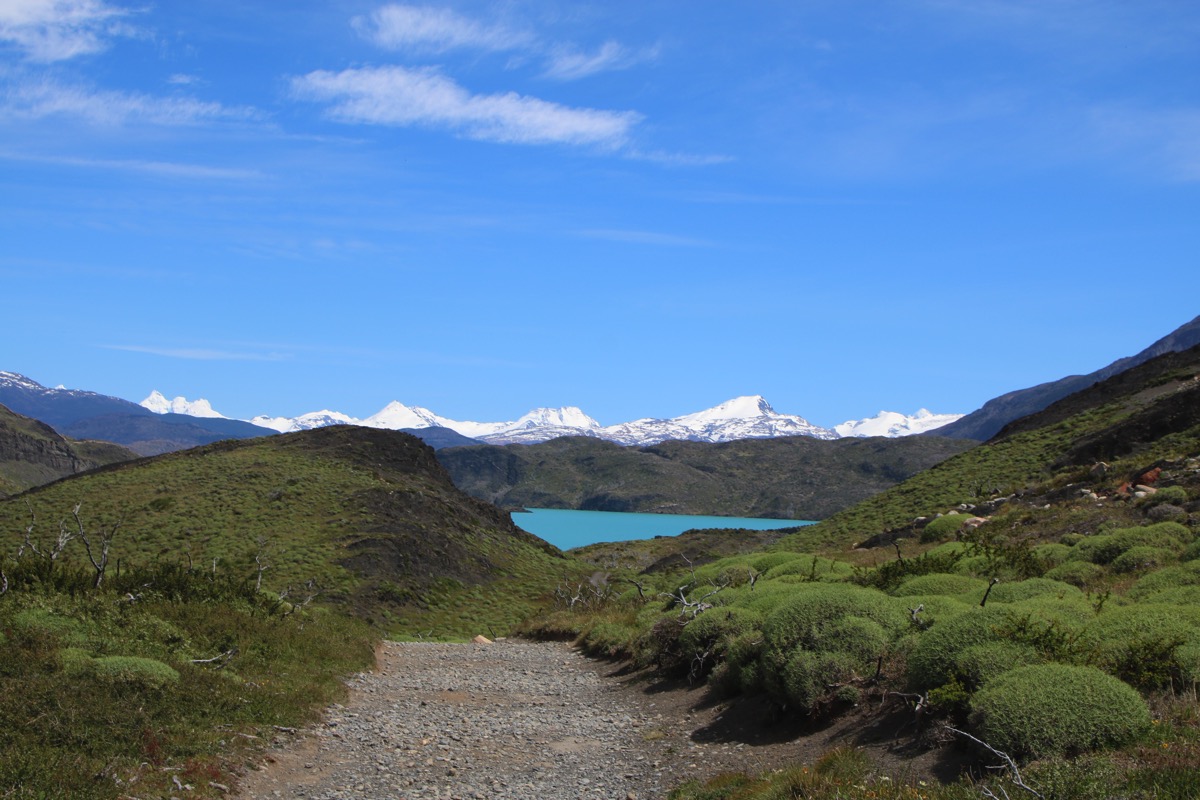
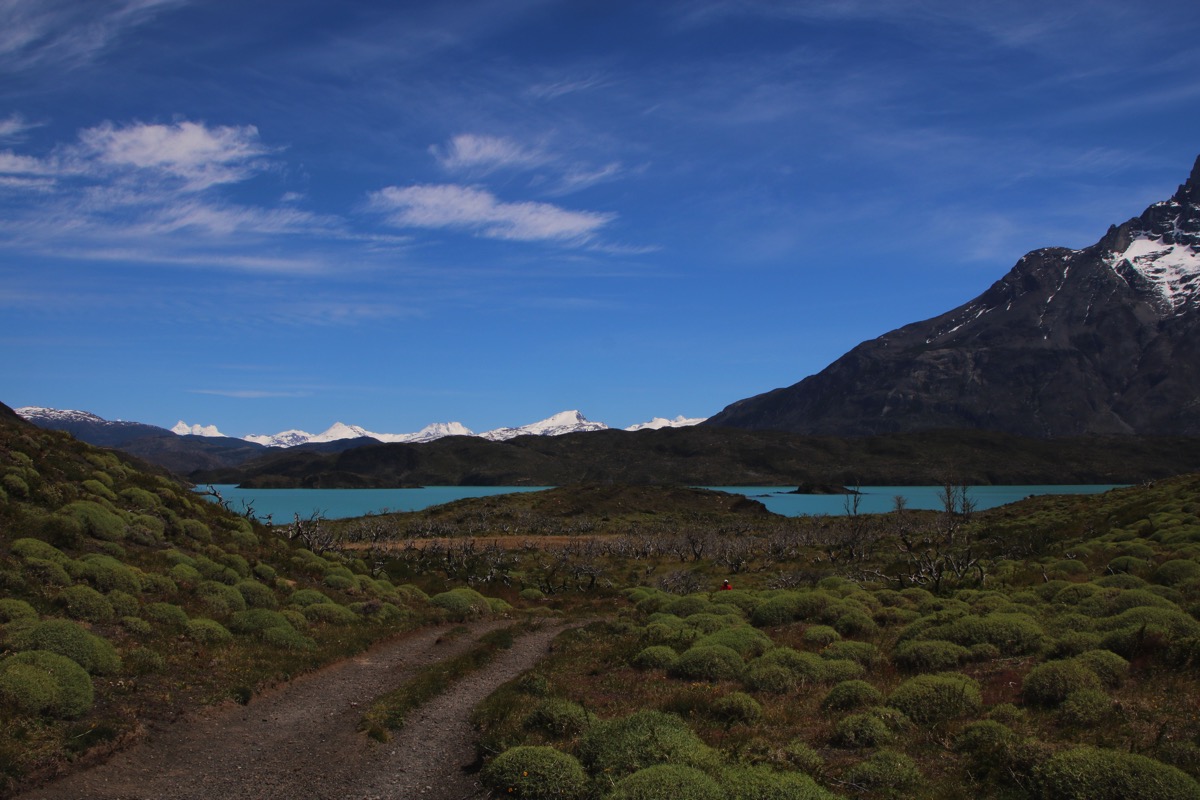
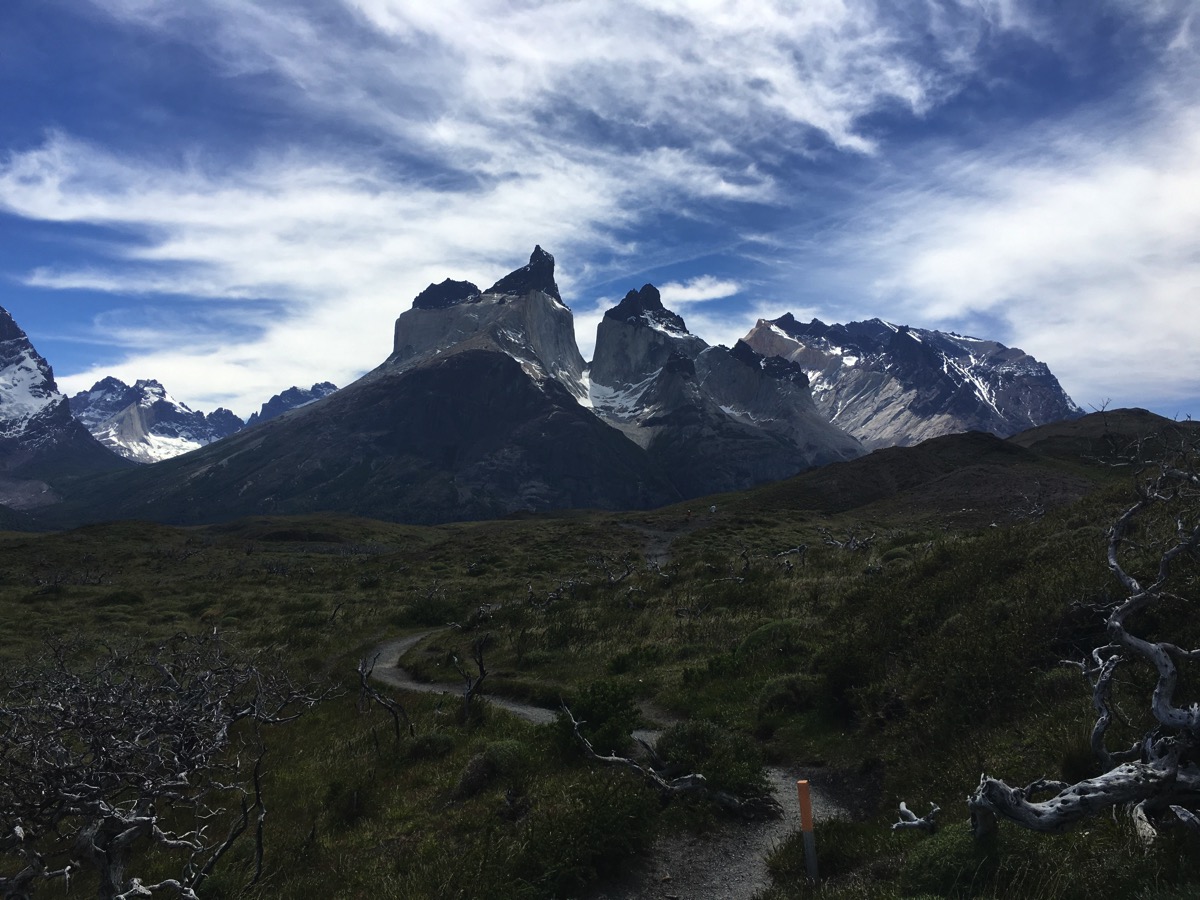
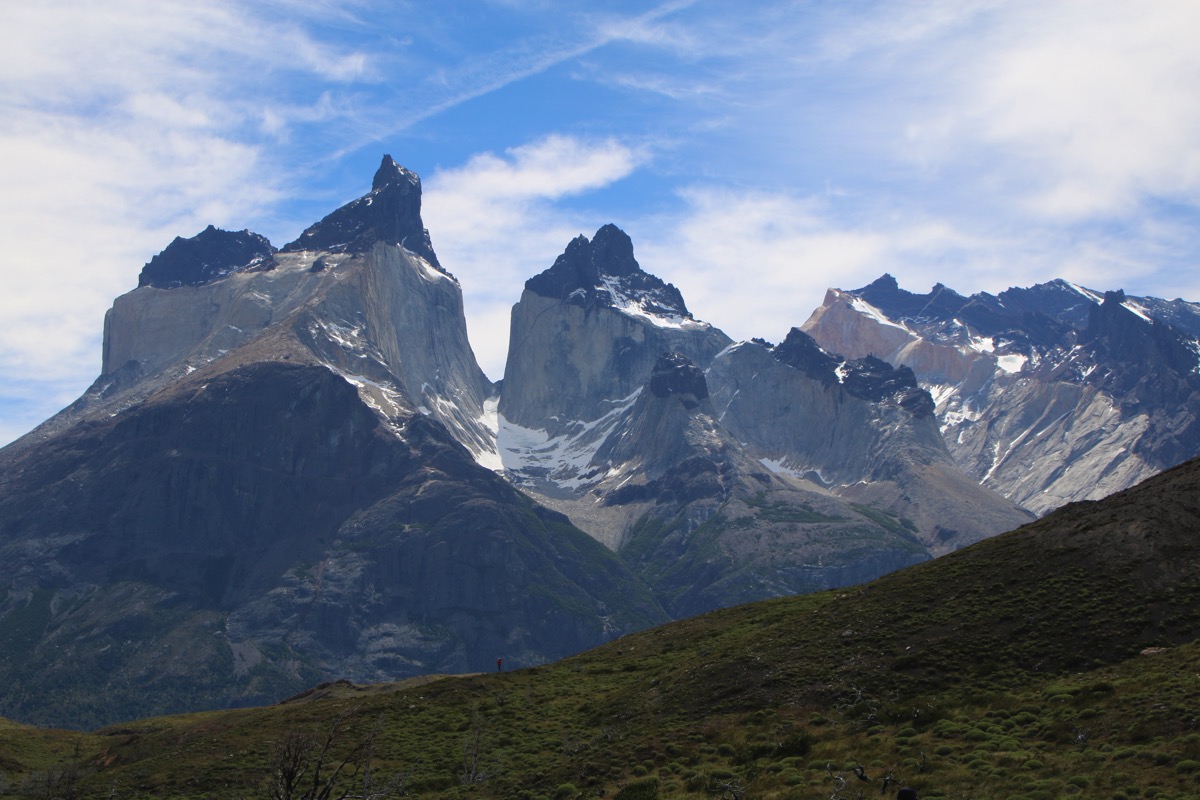
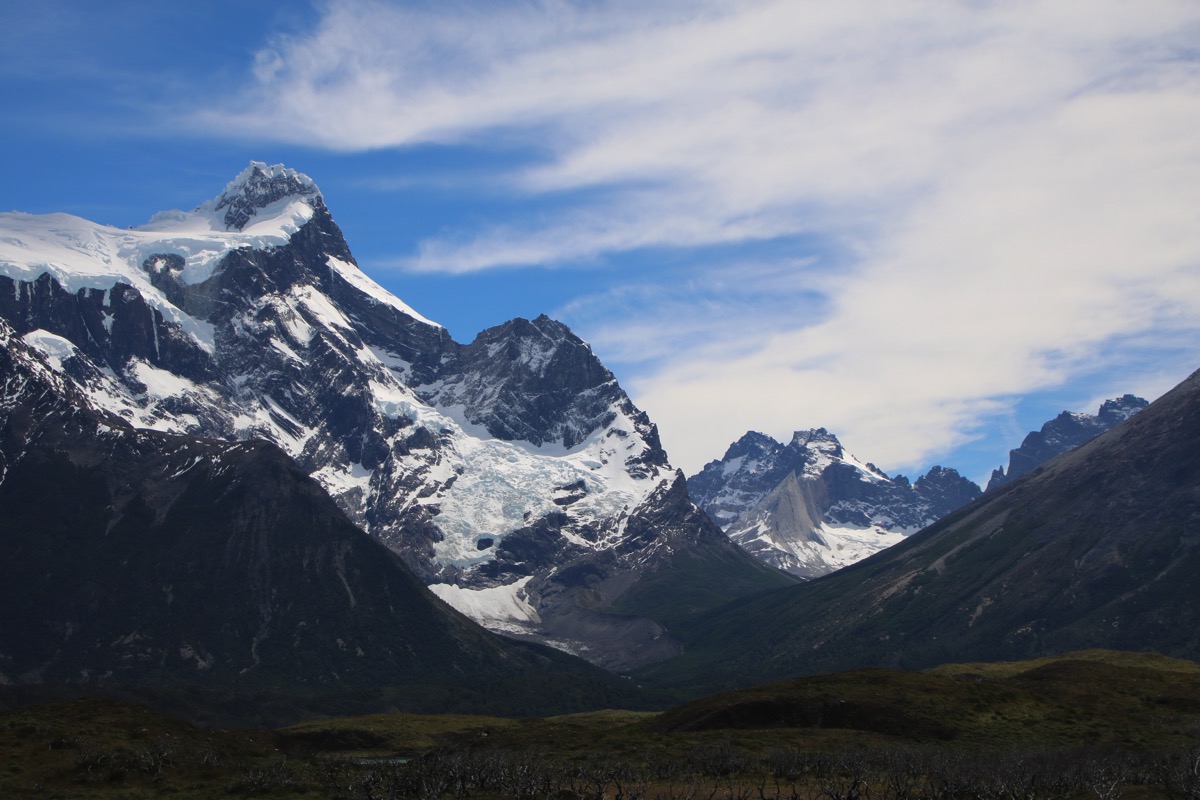
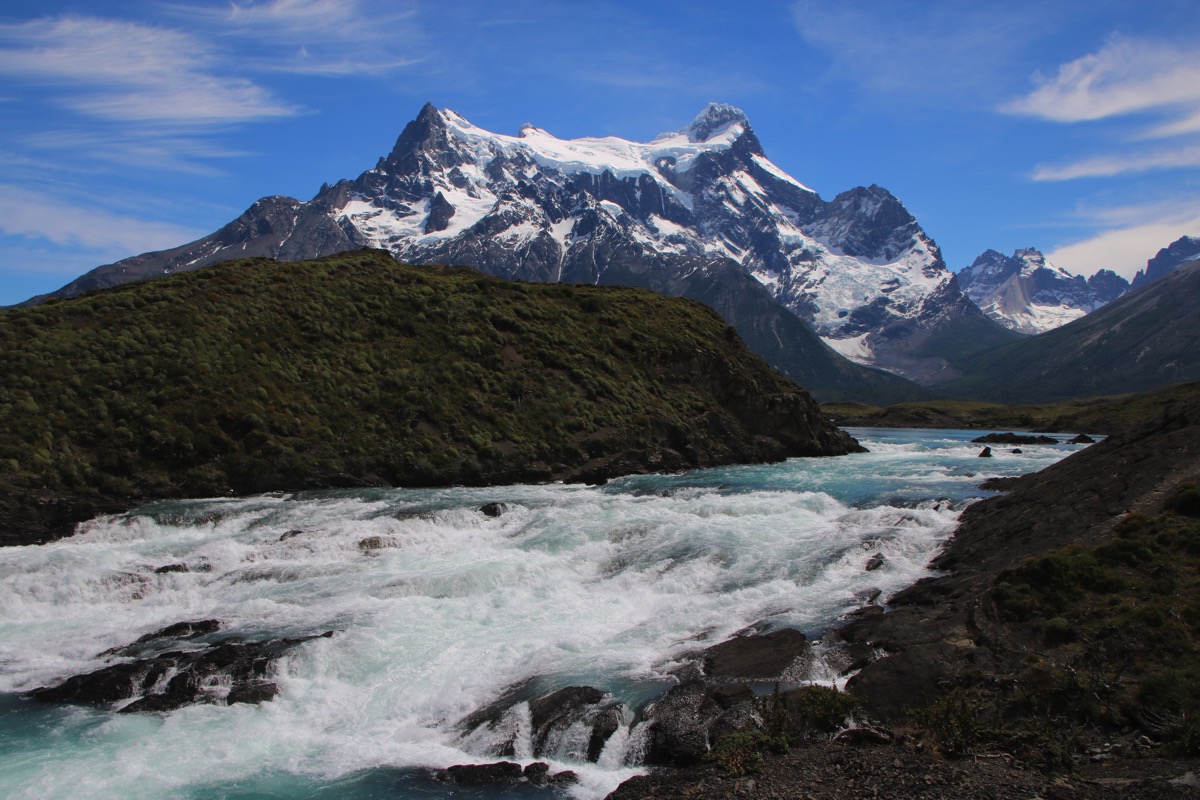
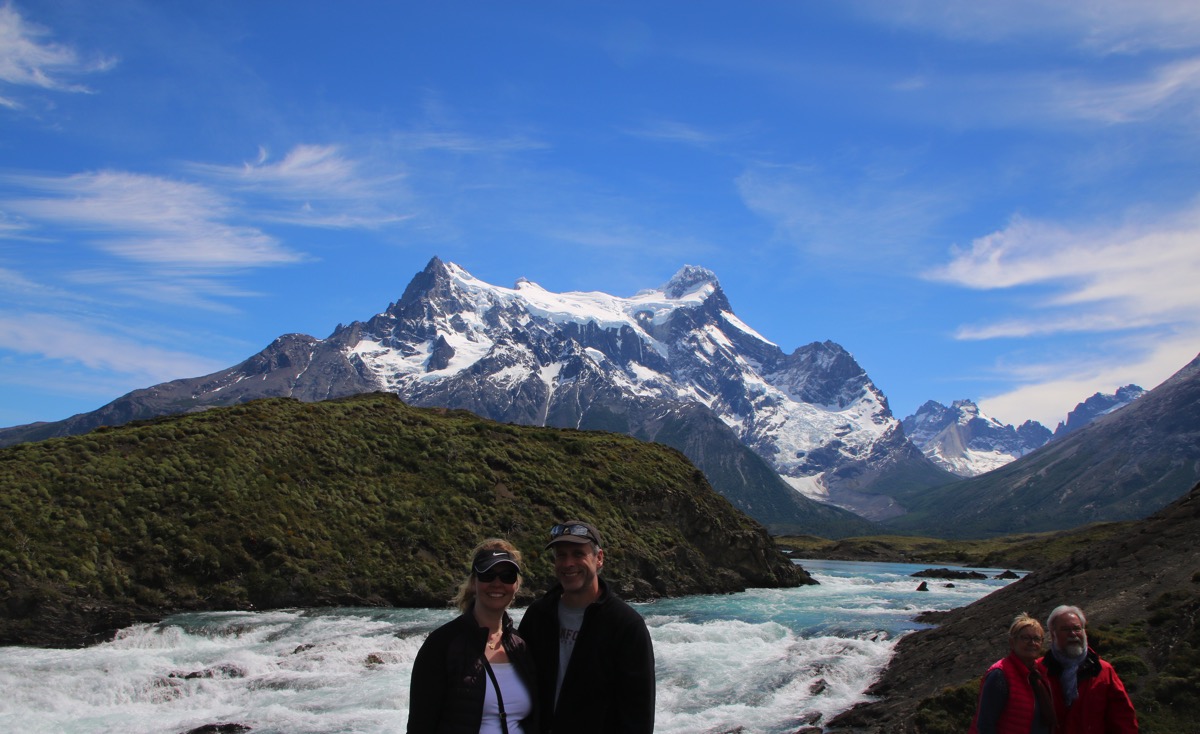
You have to bear with me, as even with all we have seen, it is still only lunch time. Stretch your legs. Take a bathroom break. I’ll wait.
As food is not included on the tour, we’ve brought our own to enjoy on the shore of a quiet, mountain lake. If there is a more spectacular spot for a picnic, I have yet to see it.
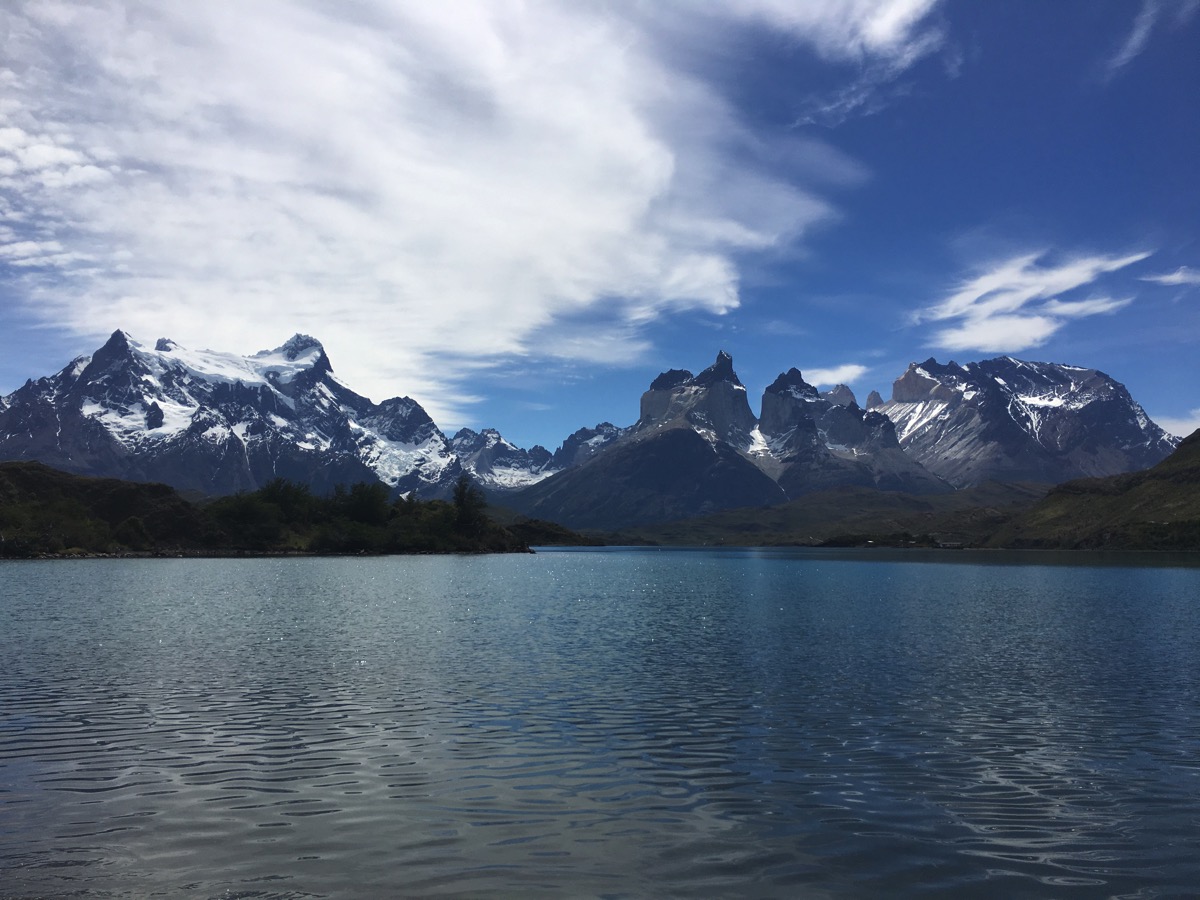
This friendly fellow seems pretty fond of it as well, particularly the scraps left behind by careless tourists.
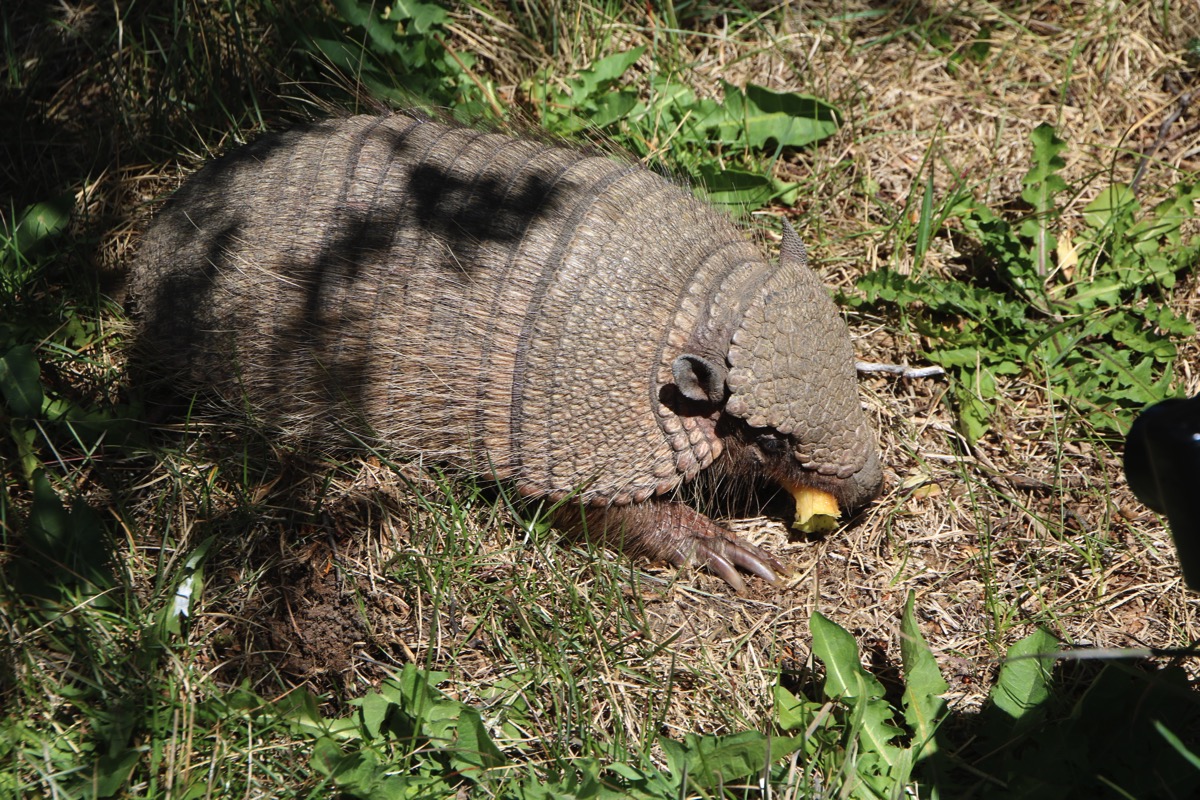
Refueled, we head off to our next hike, a 45 minute walk to a viewpoint overlooking Glaciar Gray. In the busy season, you can take kayaks up to the foot of the glacier, but this time of year, the overlook is as close as you can get (on a tour at least). With the blue sky it is a much different (not better, just different) experience than the glaciers on our boat tour.
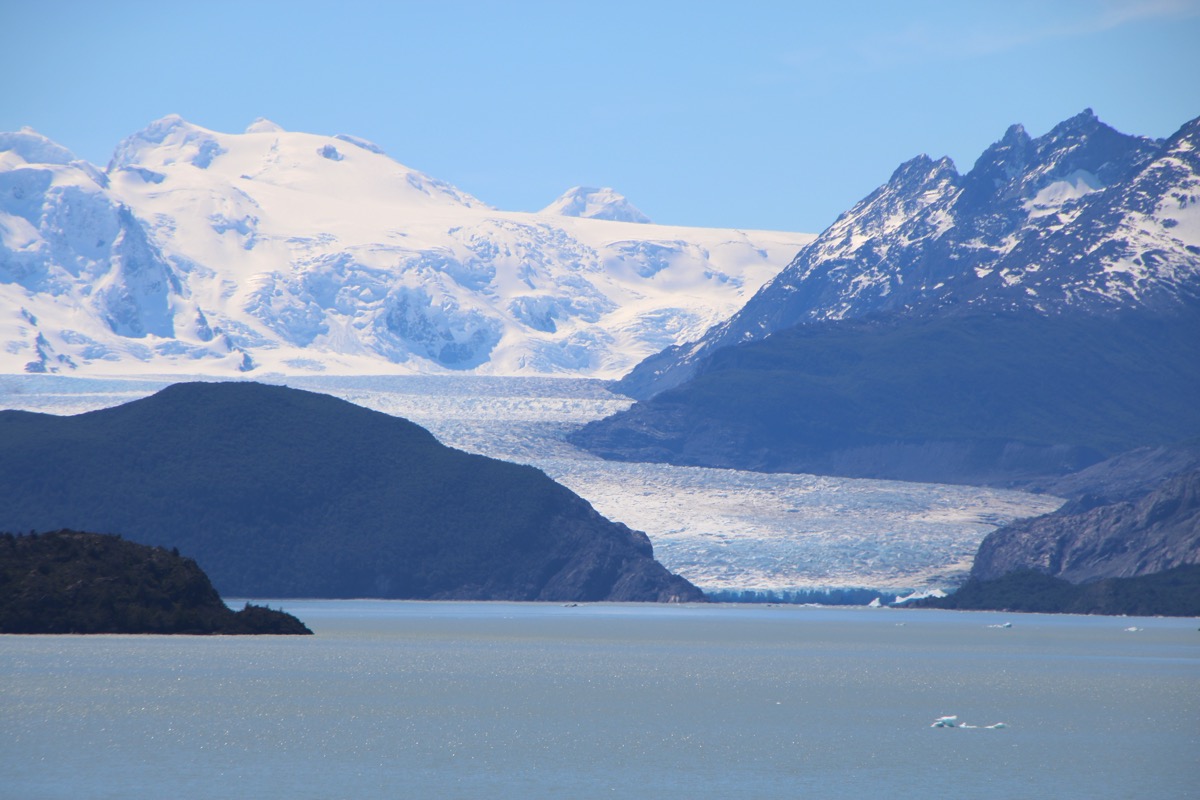
The lake is littered with ice bergs that have broken off and drifted towards the lookout. They don’t look like much here, but are at least 3 or 4 times the size of our house.
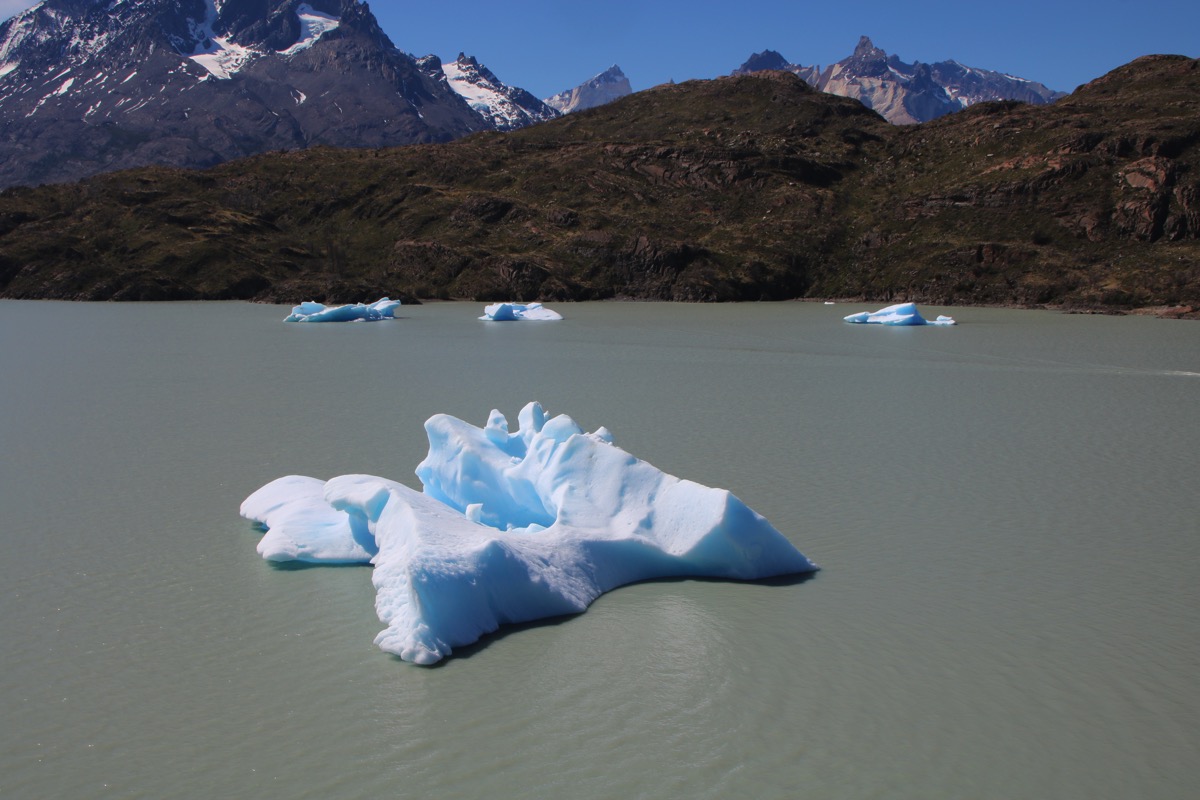
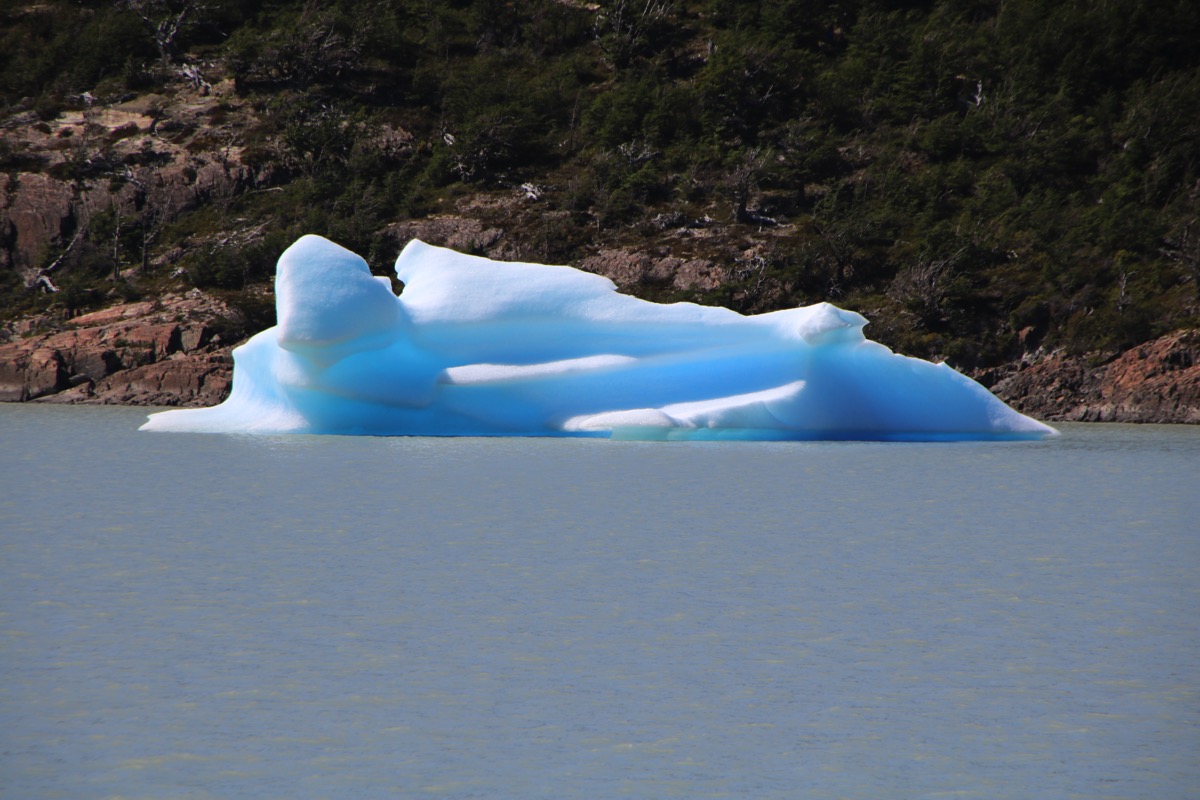
Before we leave the park, there is one final viewpoint that pulls together a little bit of everything we’ve experienced today.
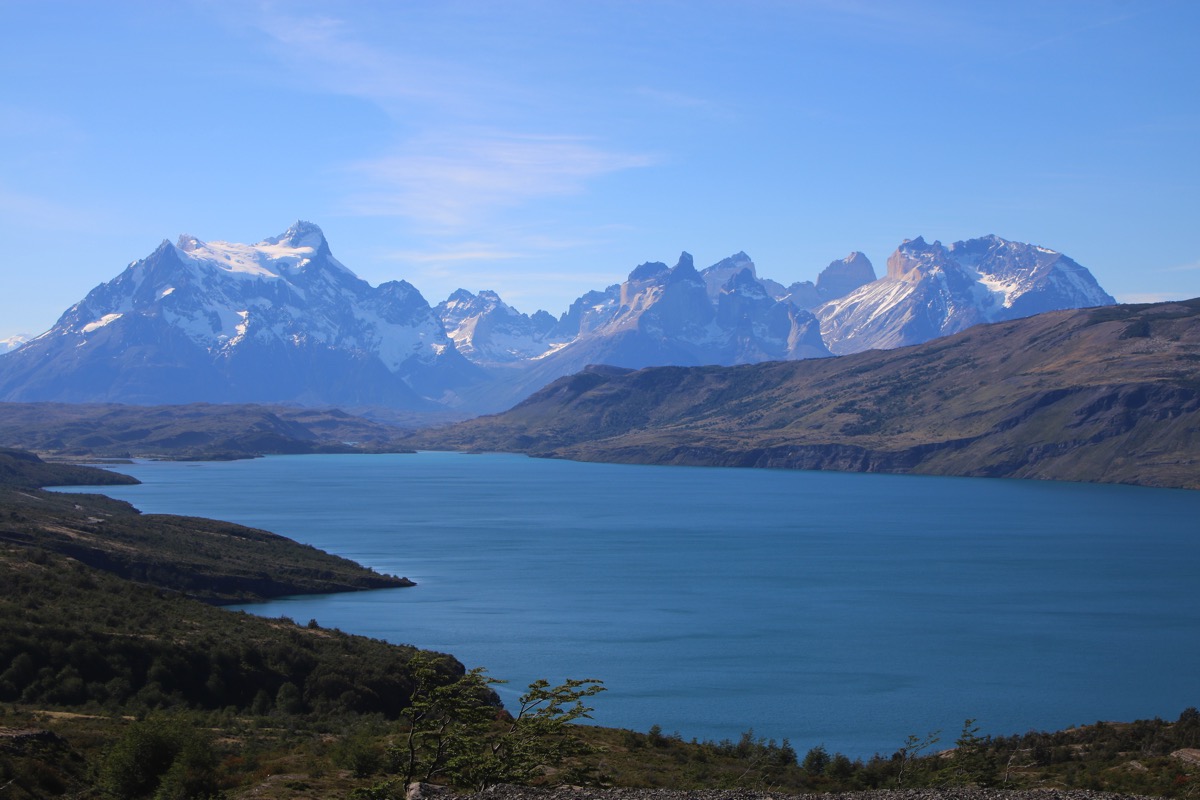
On the way back to Puerto Natales, there is one last stop at a cave where they found the remains of an ancient sloth called a mylodon. On any other day it might be noteworthy, but compared to the park it is mostly an afterthought. If your curious, pretty much picture Sid from Ice Age, but 10 feet tall. As always, Google has more about them than you ever cared to know.
Tomorrow we’ve signed up to head back into the park for the 11.2 mile hike to the base of the towers. Once the rush from our tour today wears off, that may seem far less appealing, but they wisely took our money now, so its game on.
